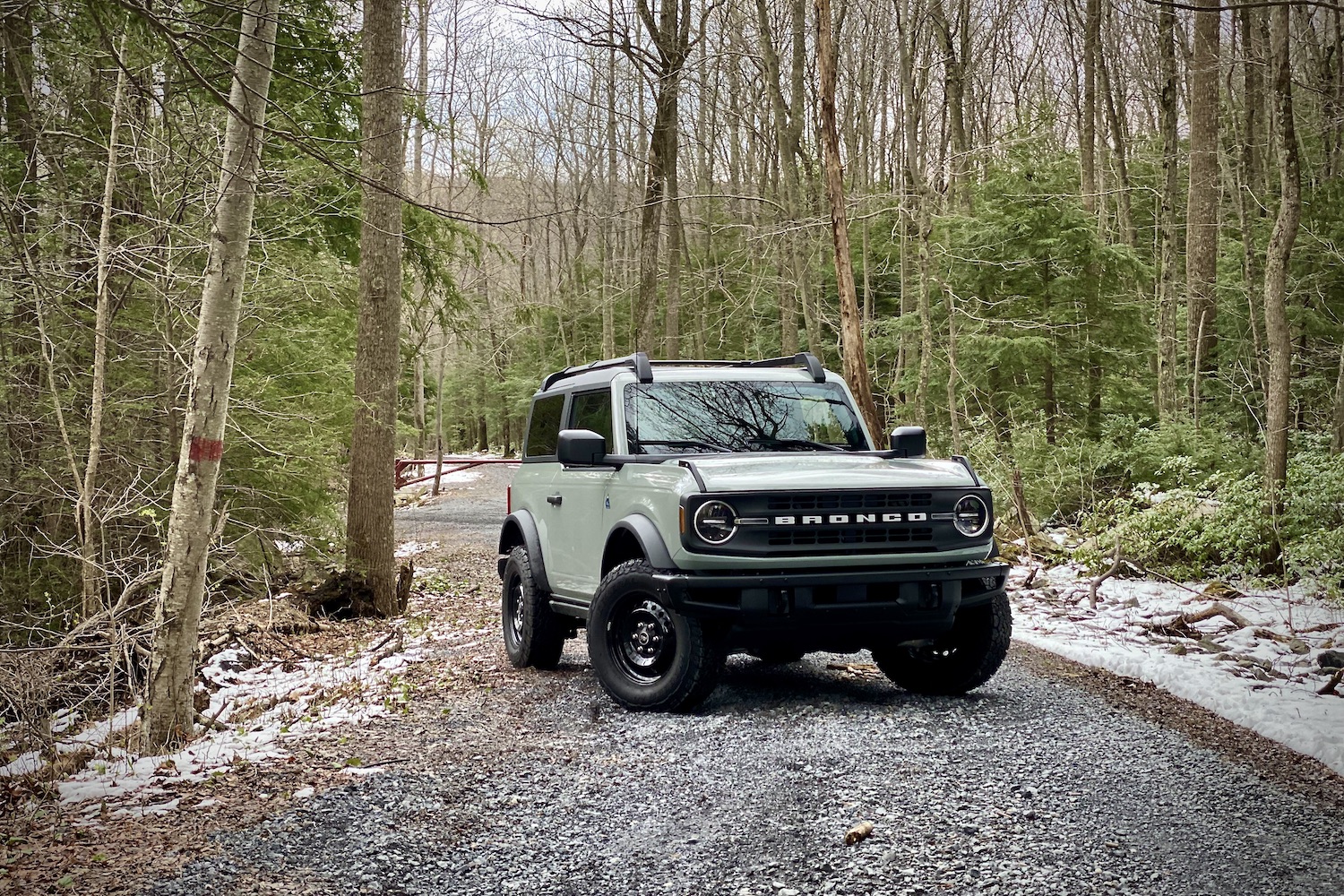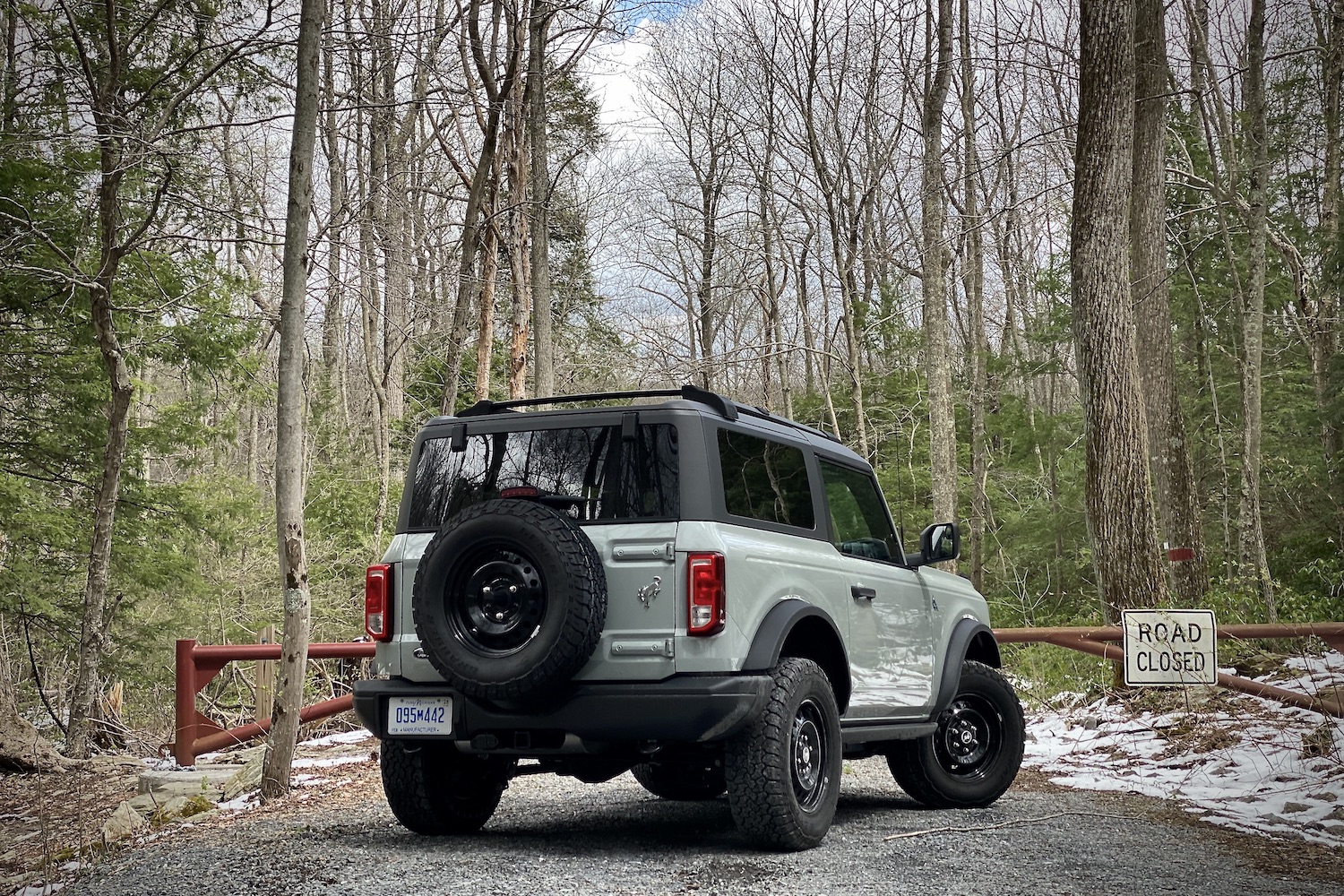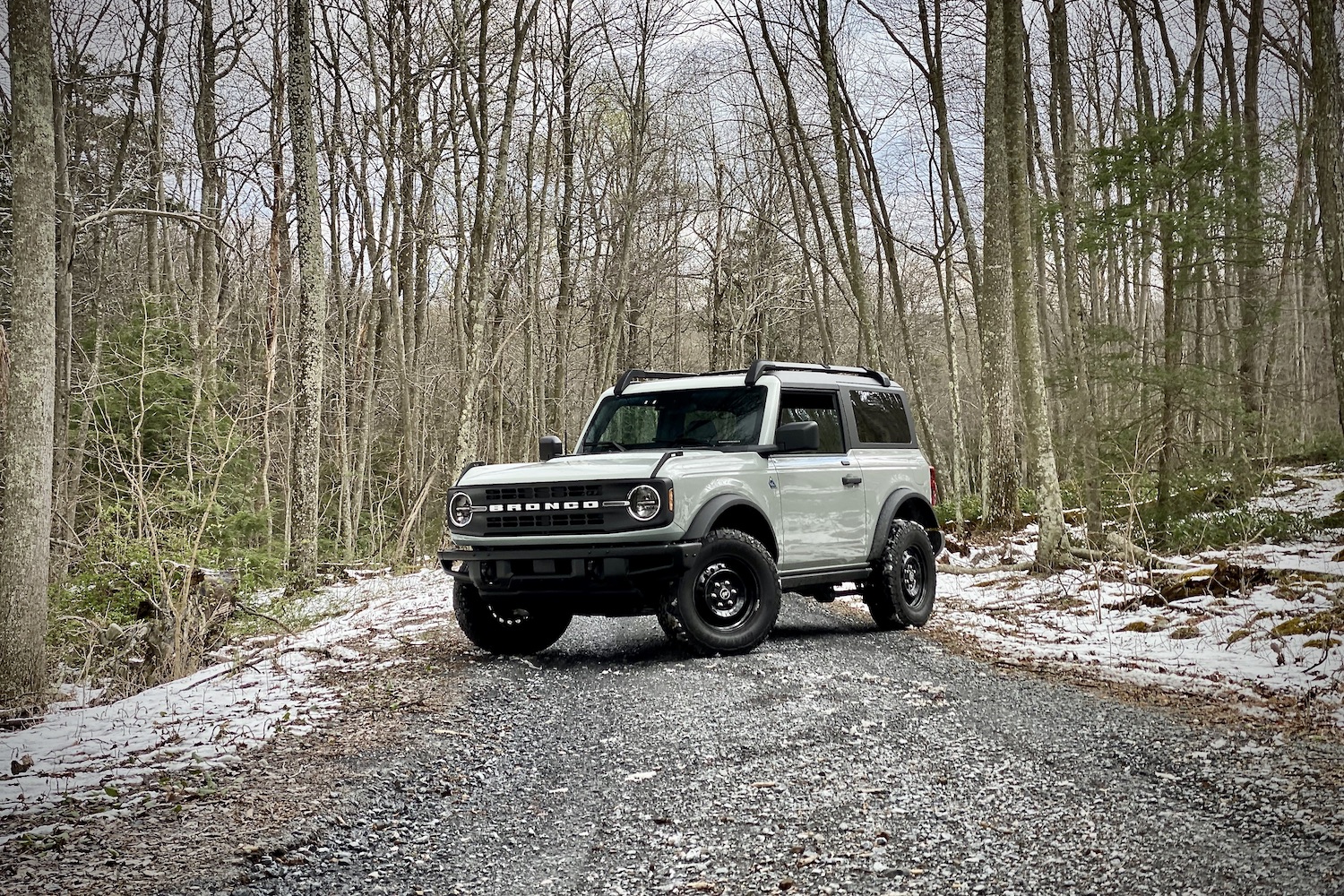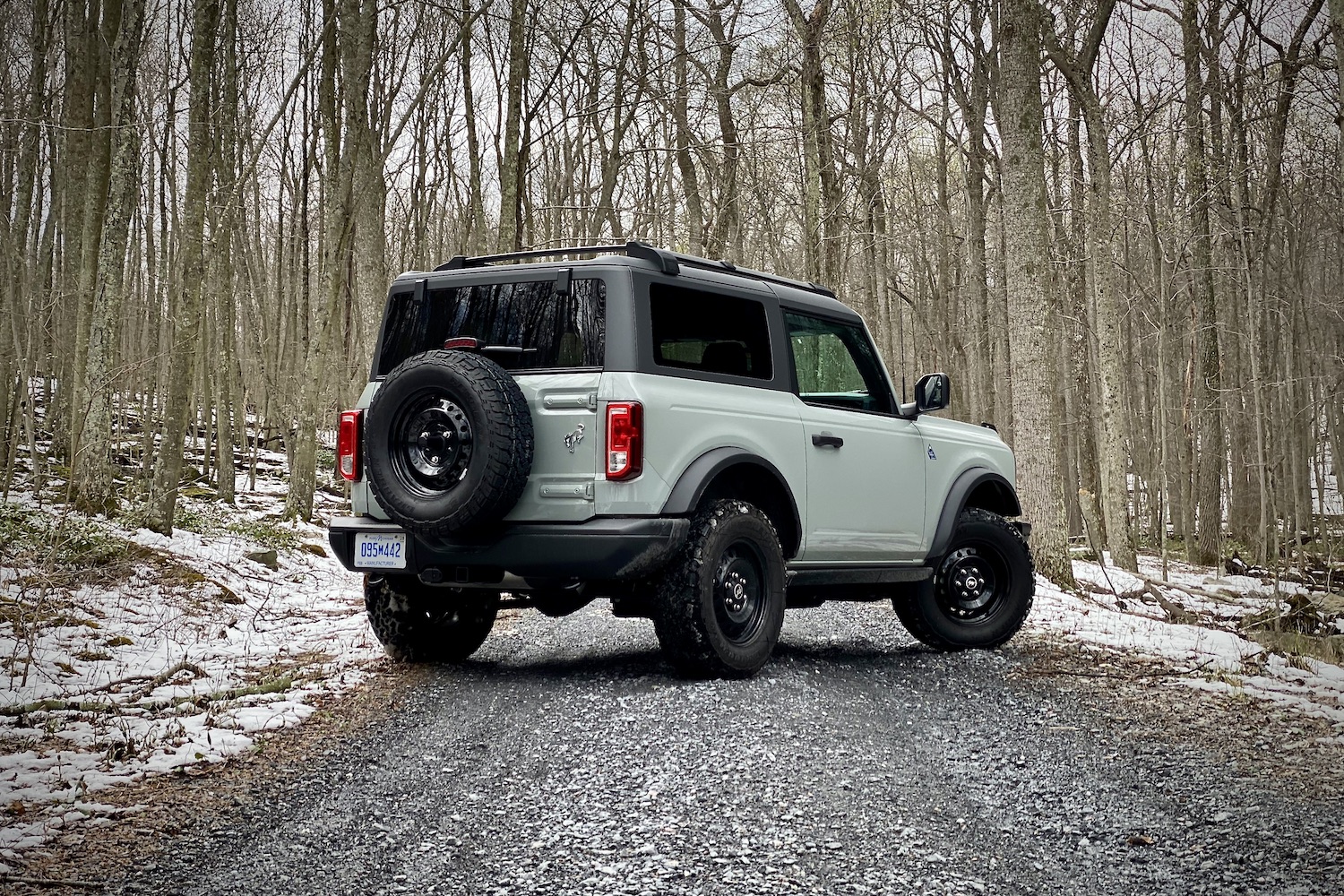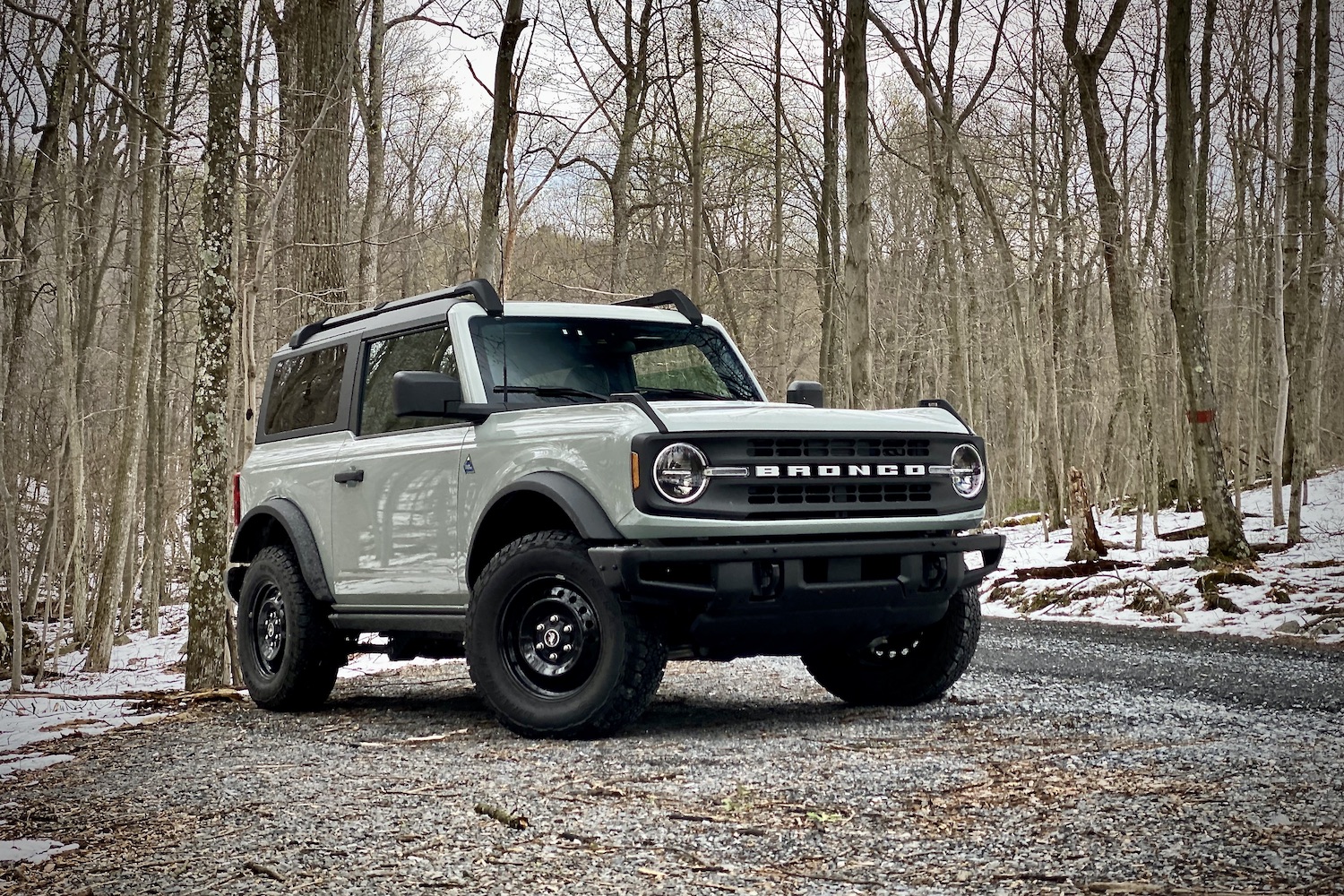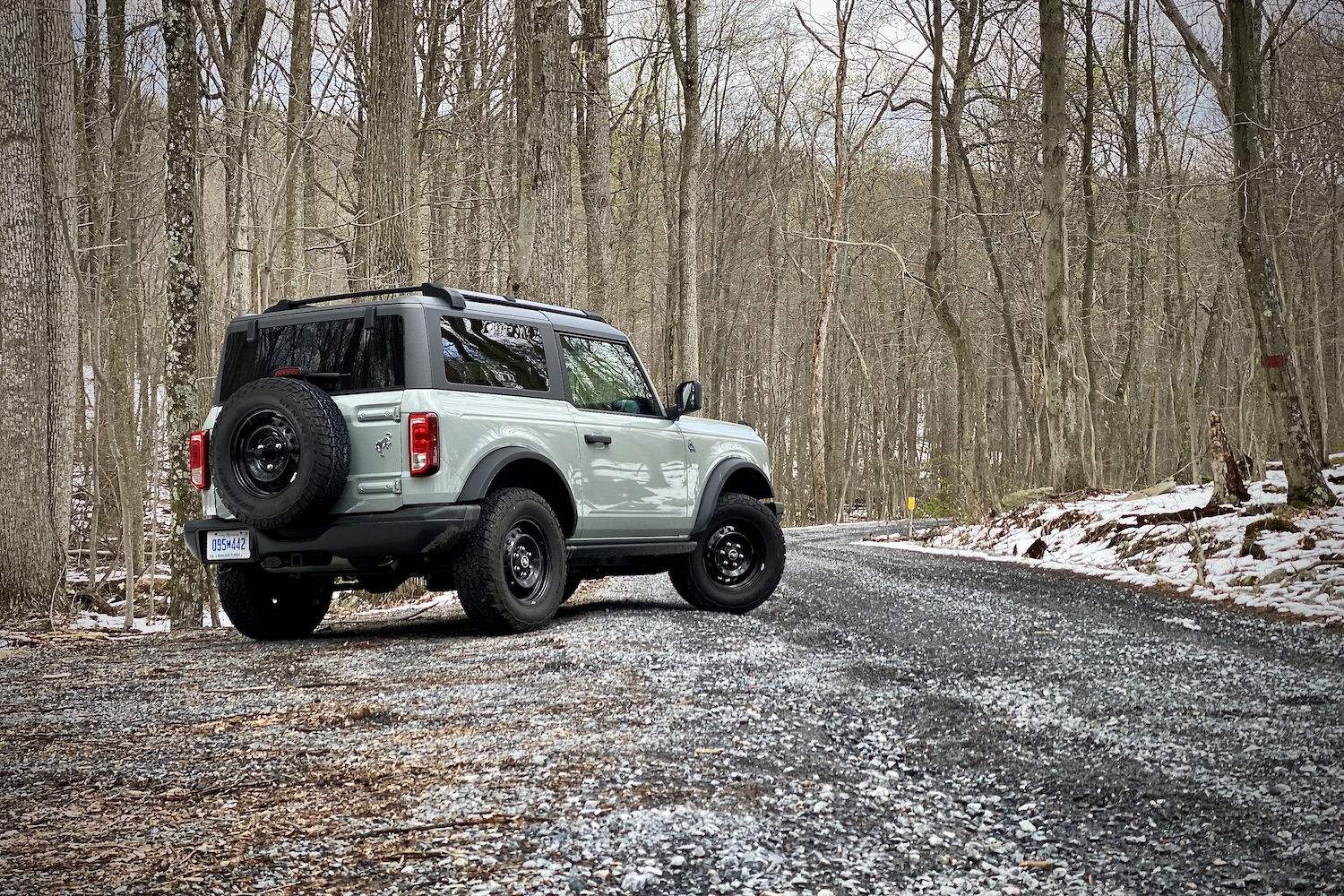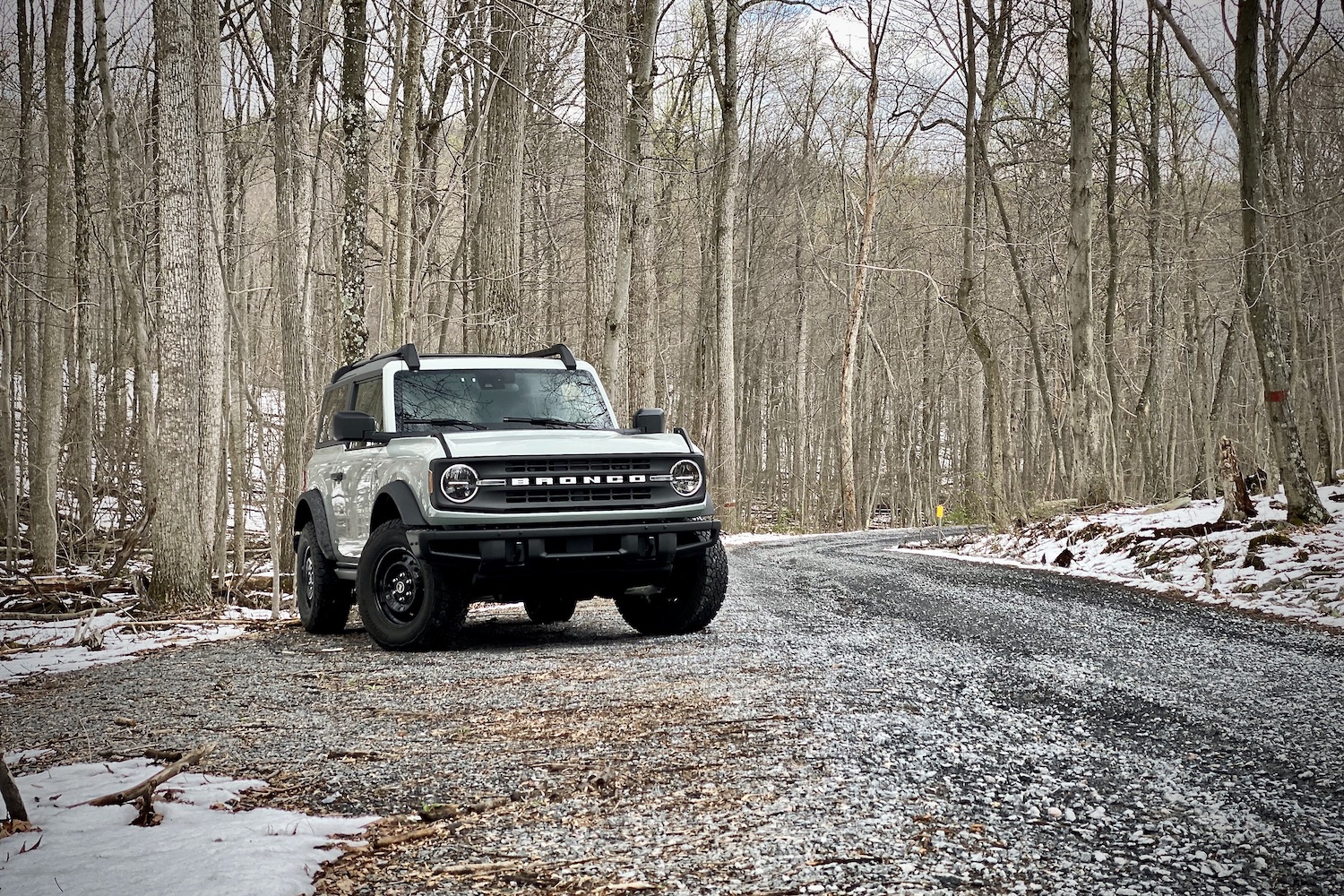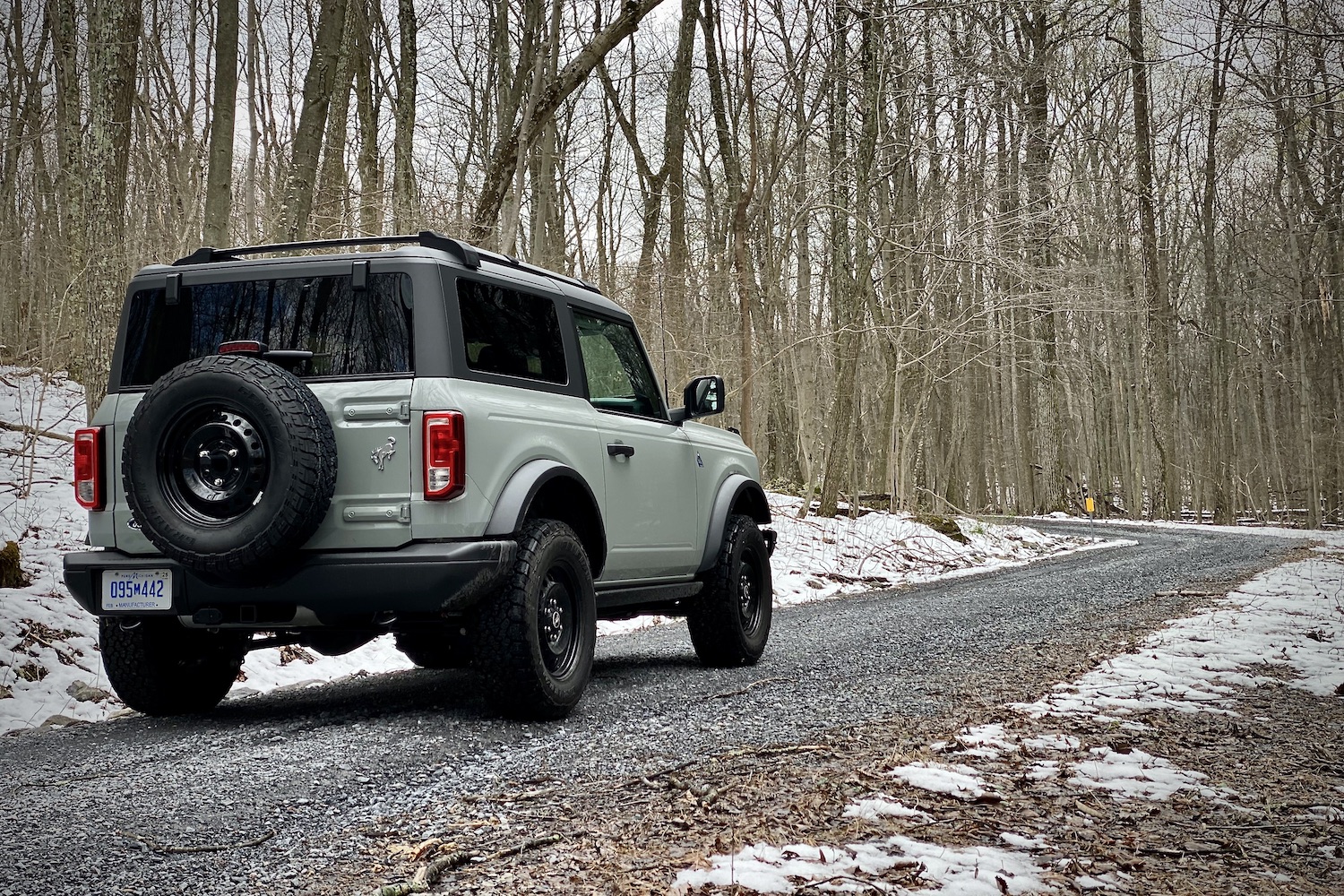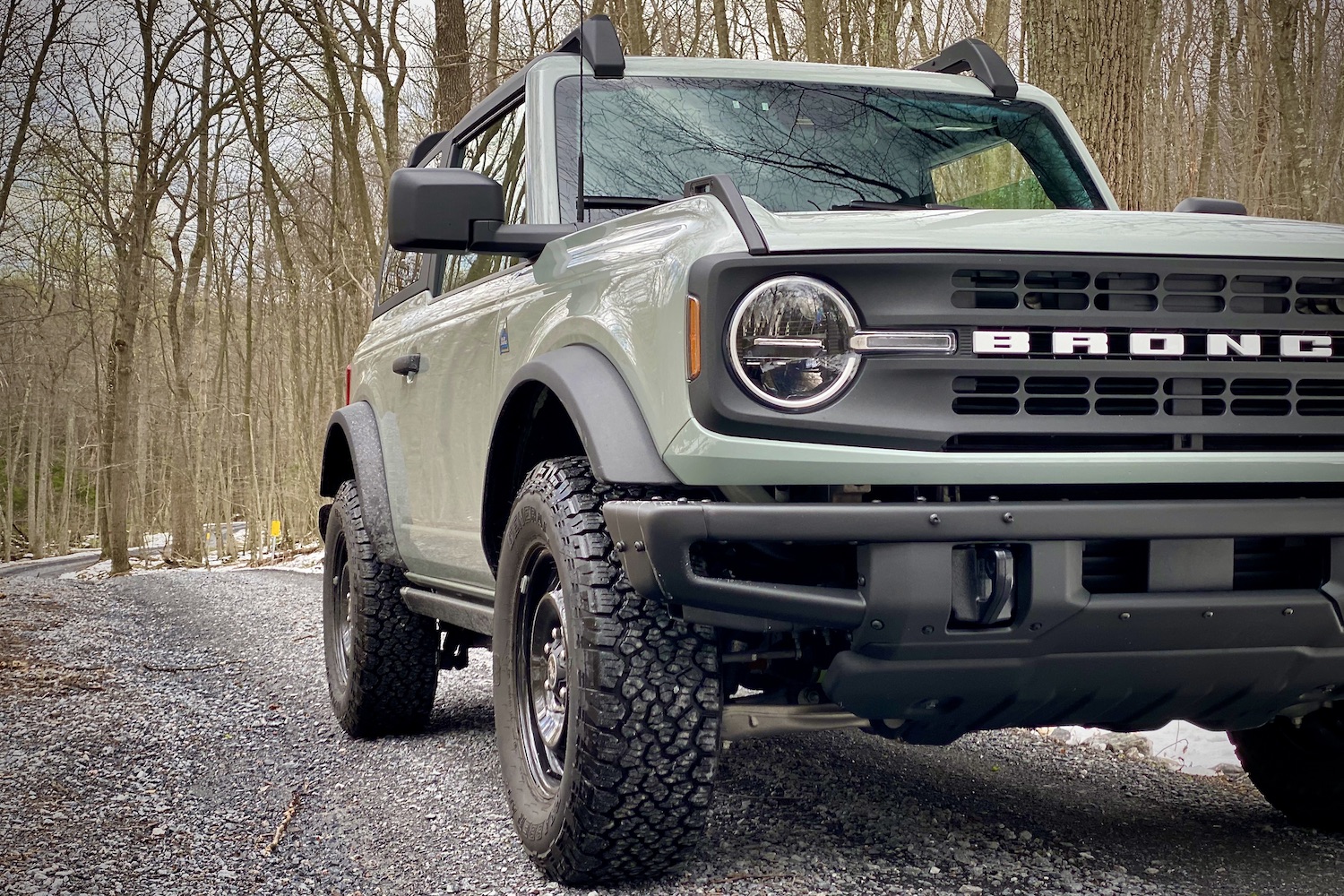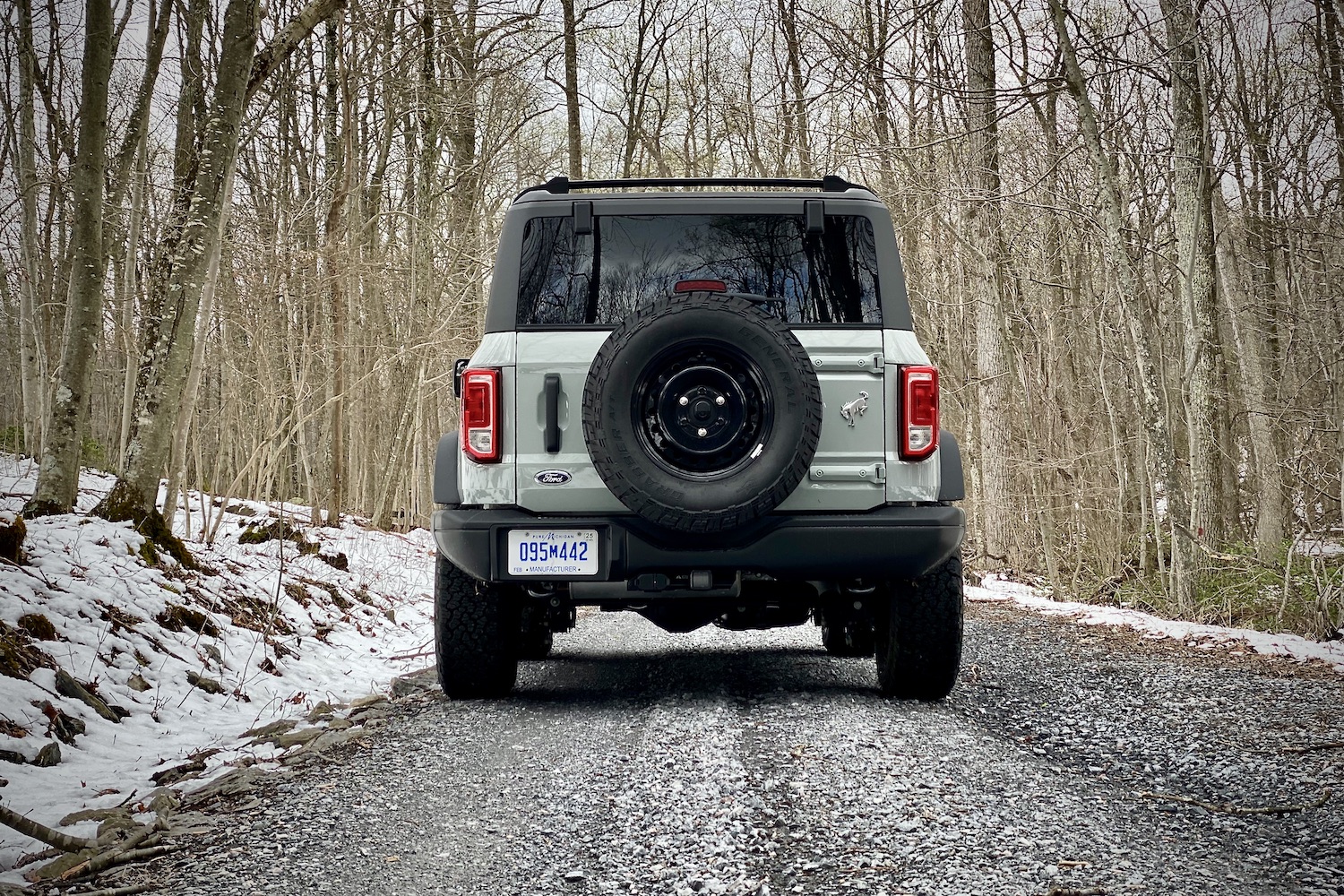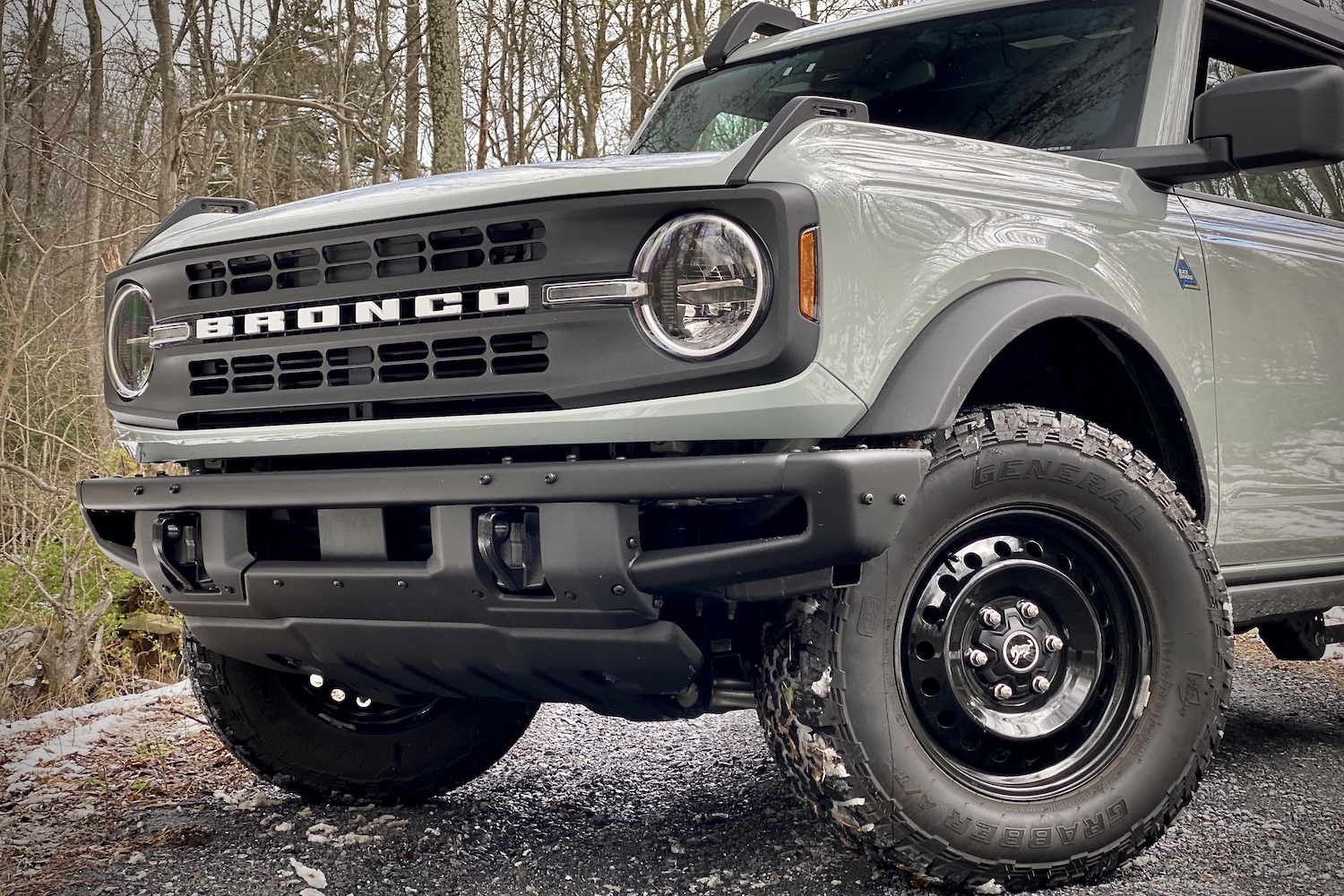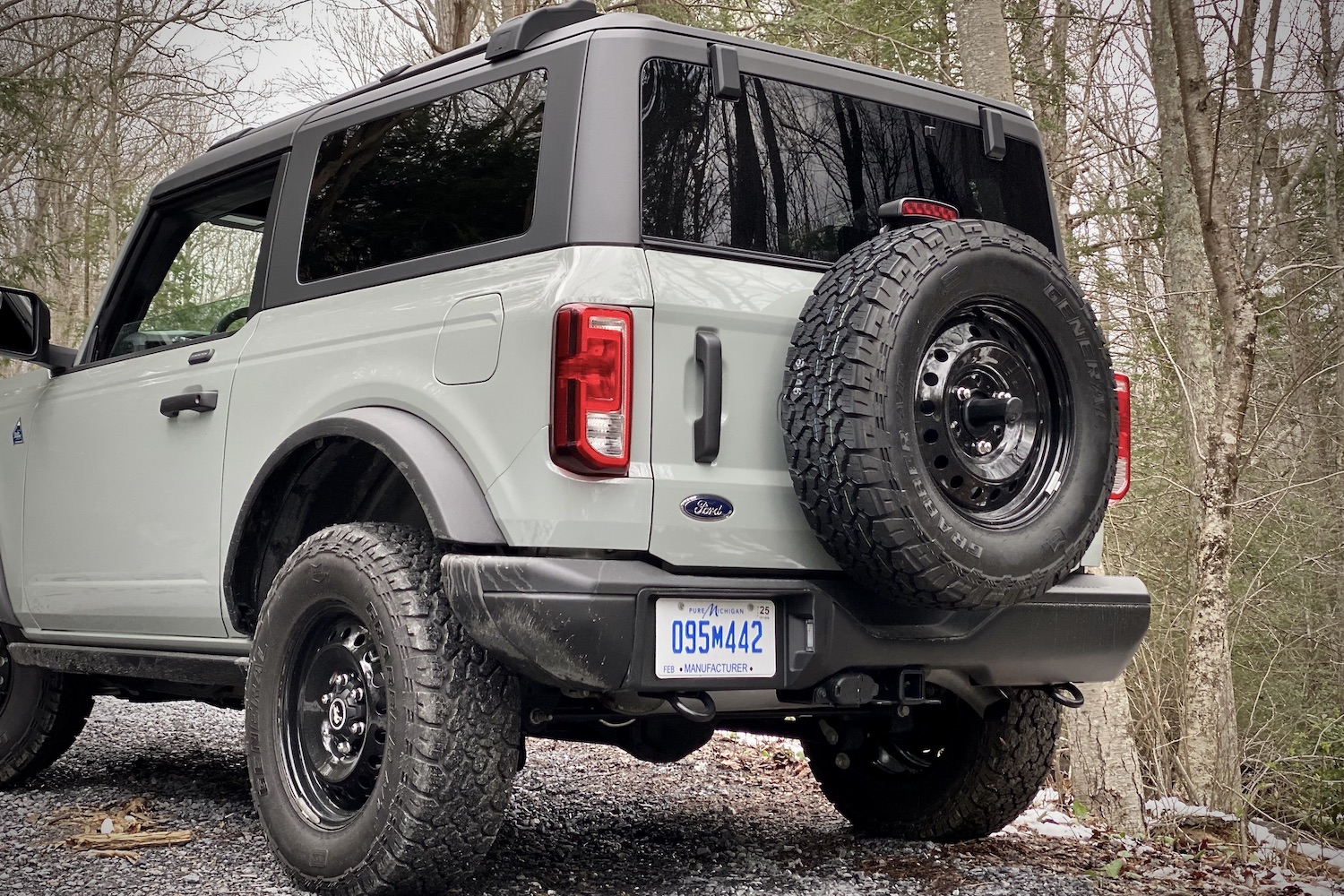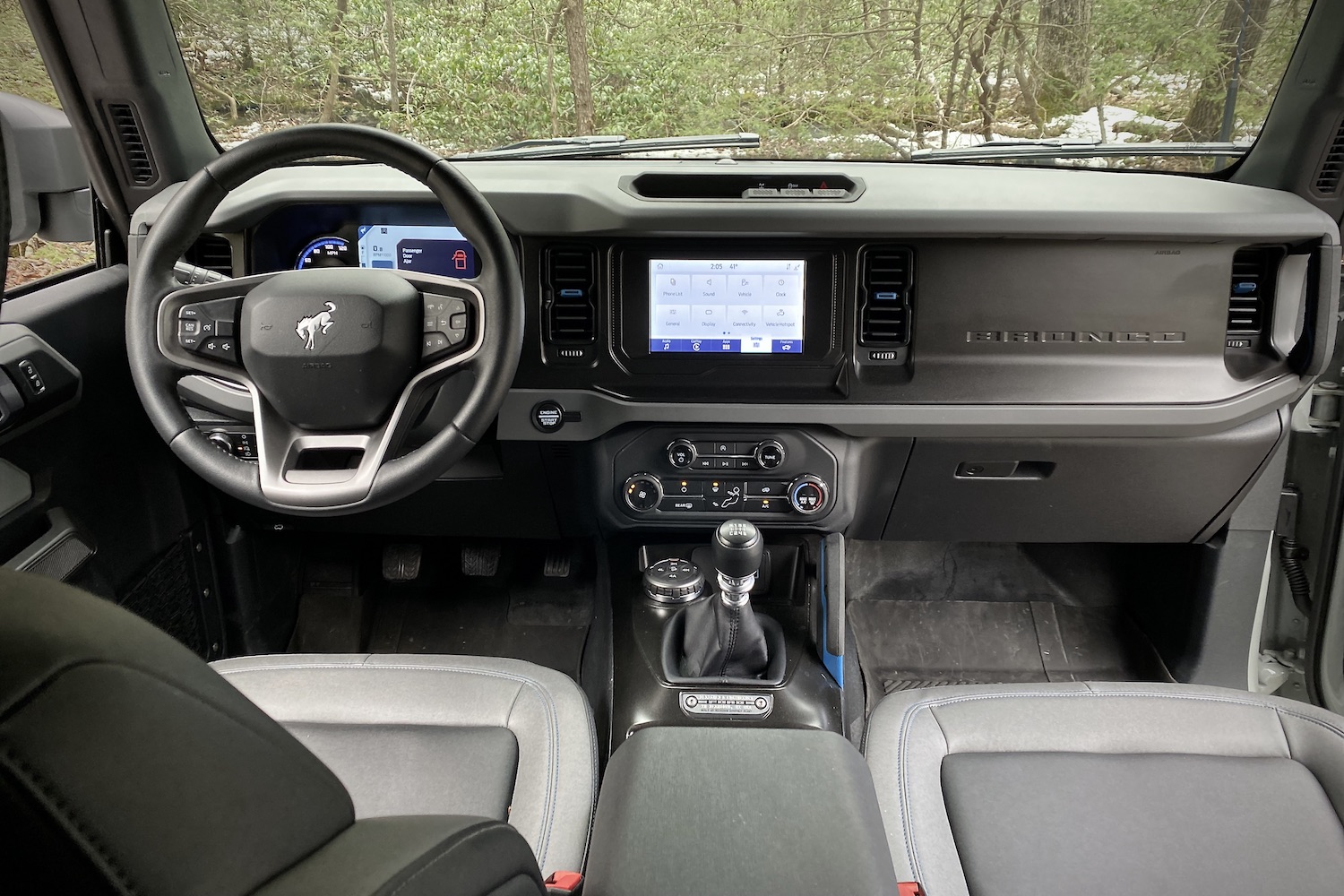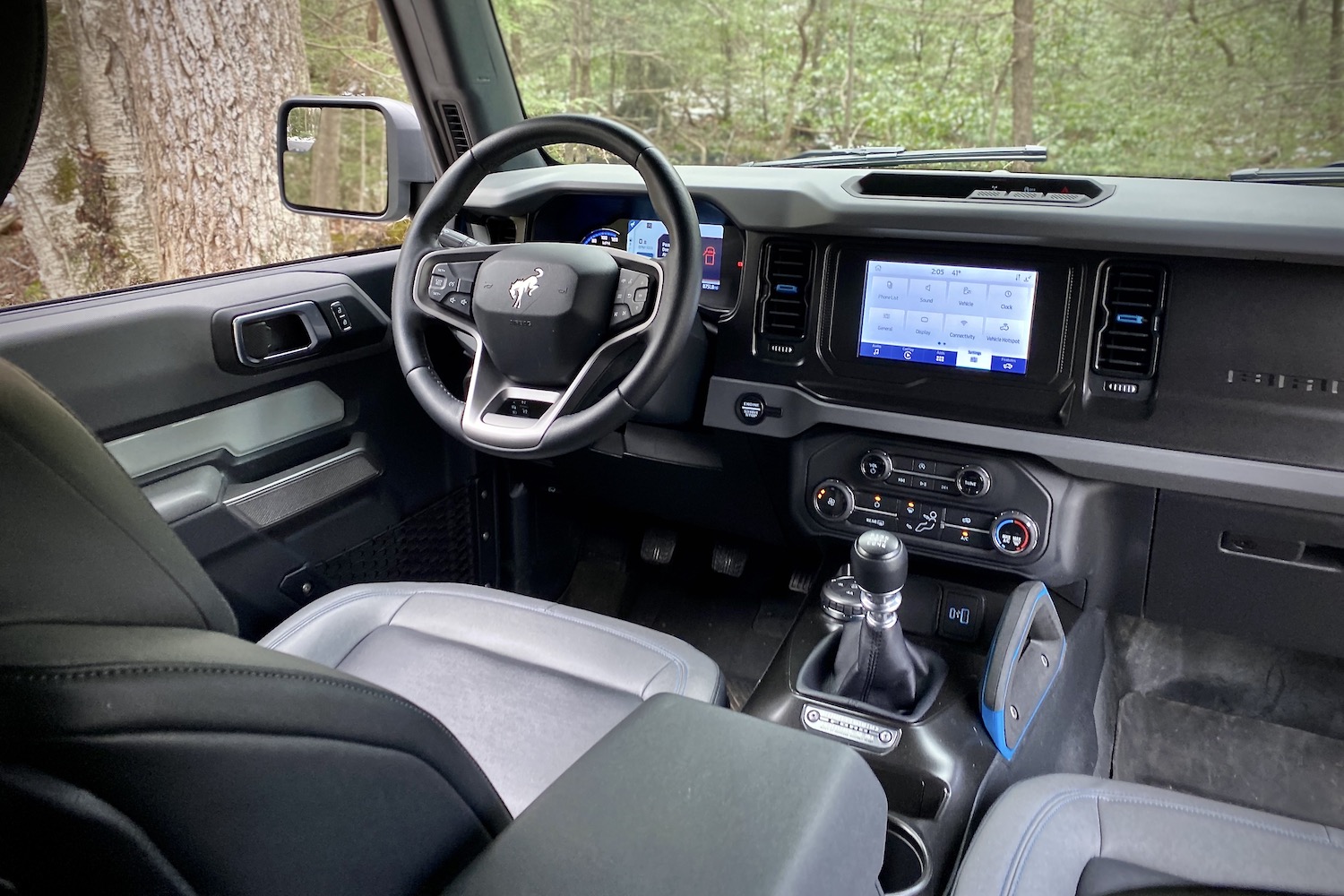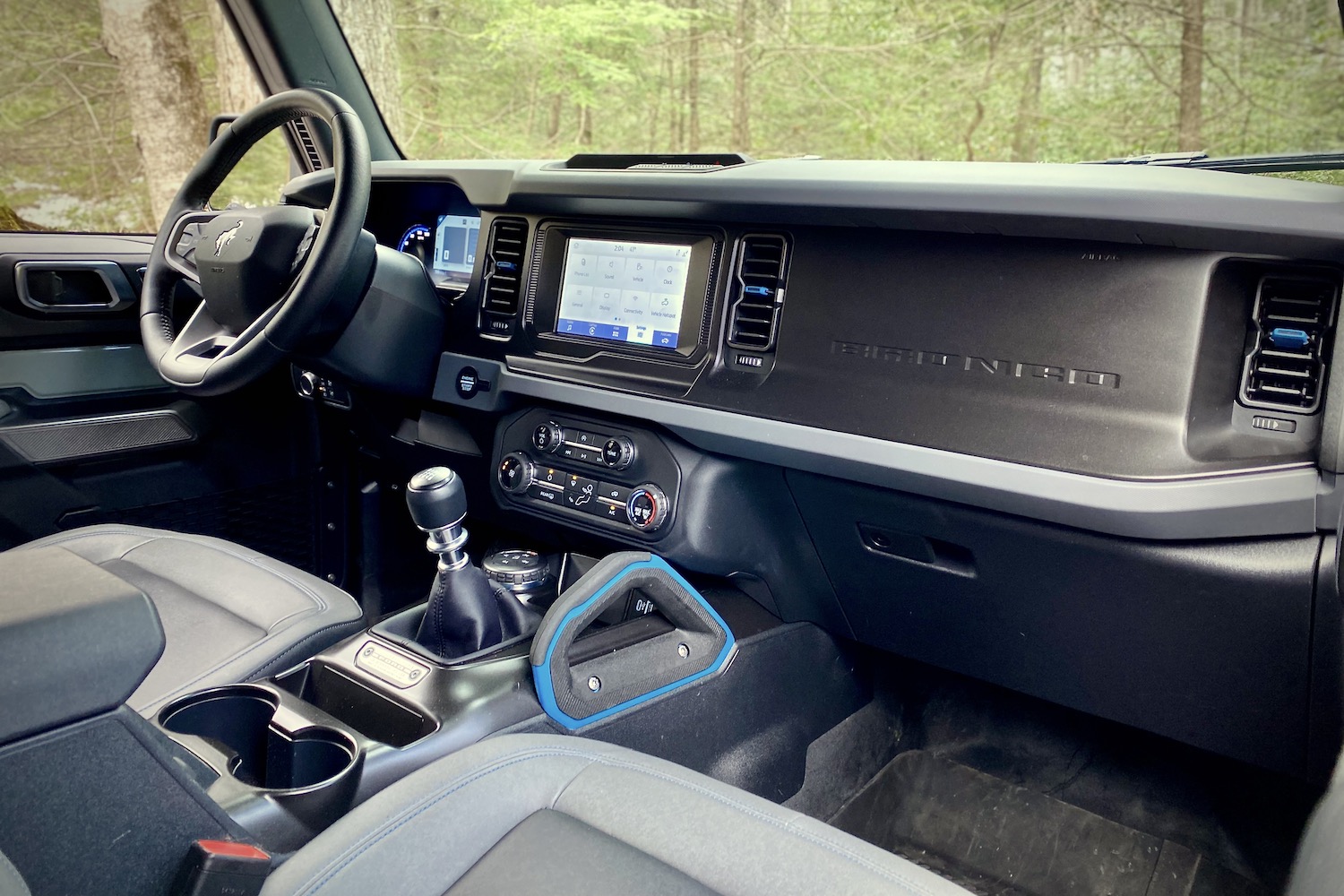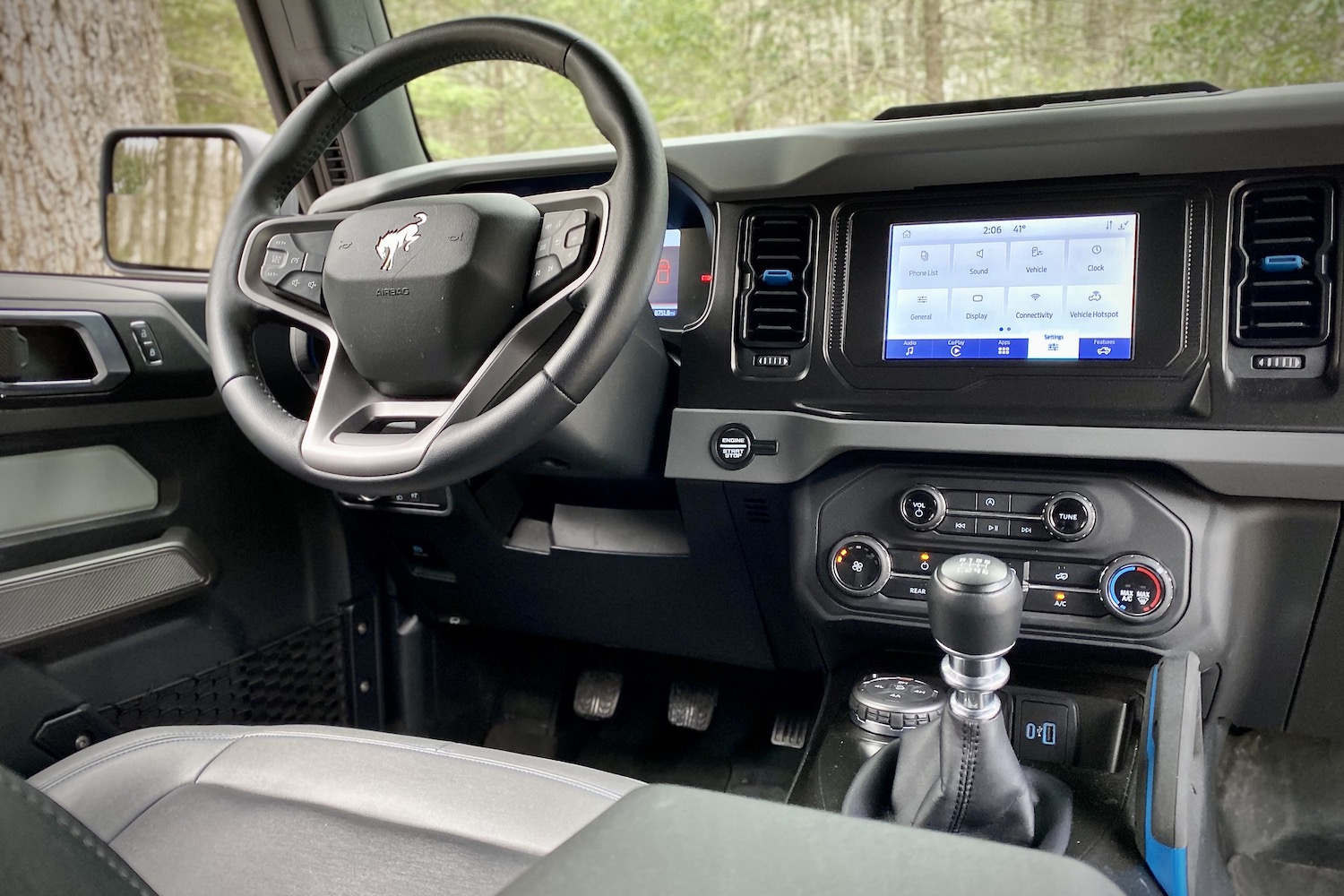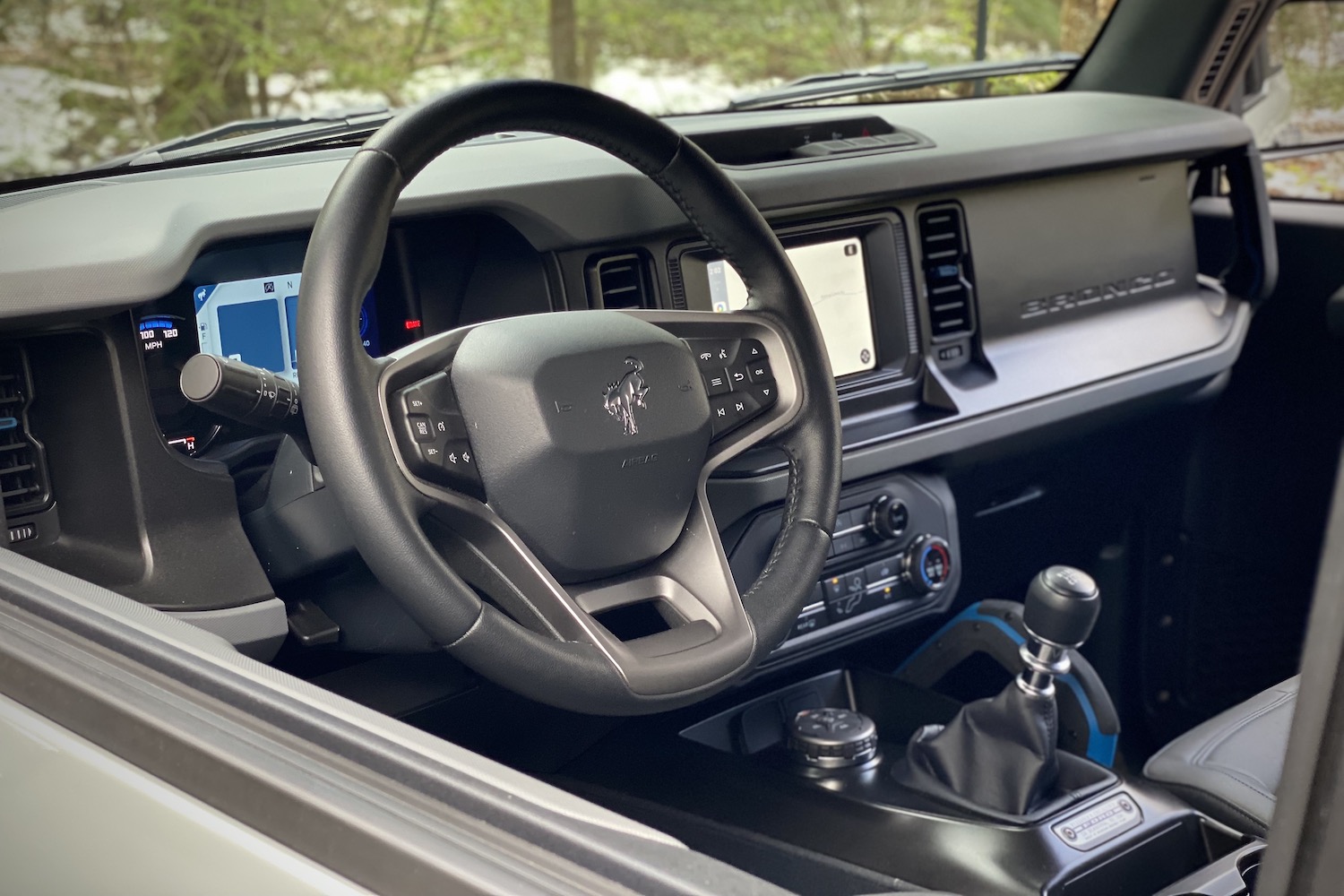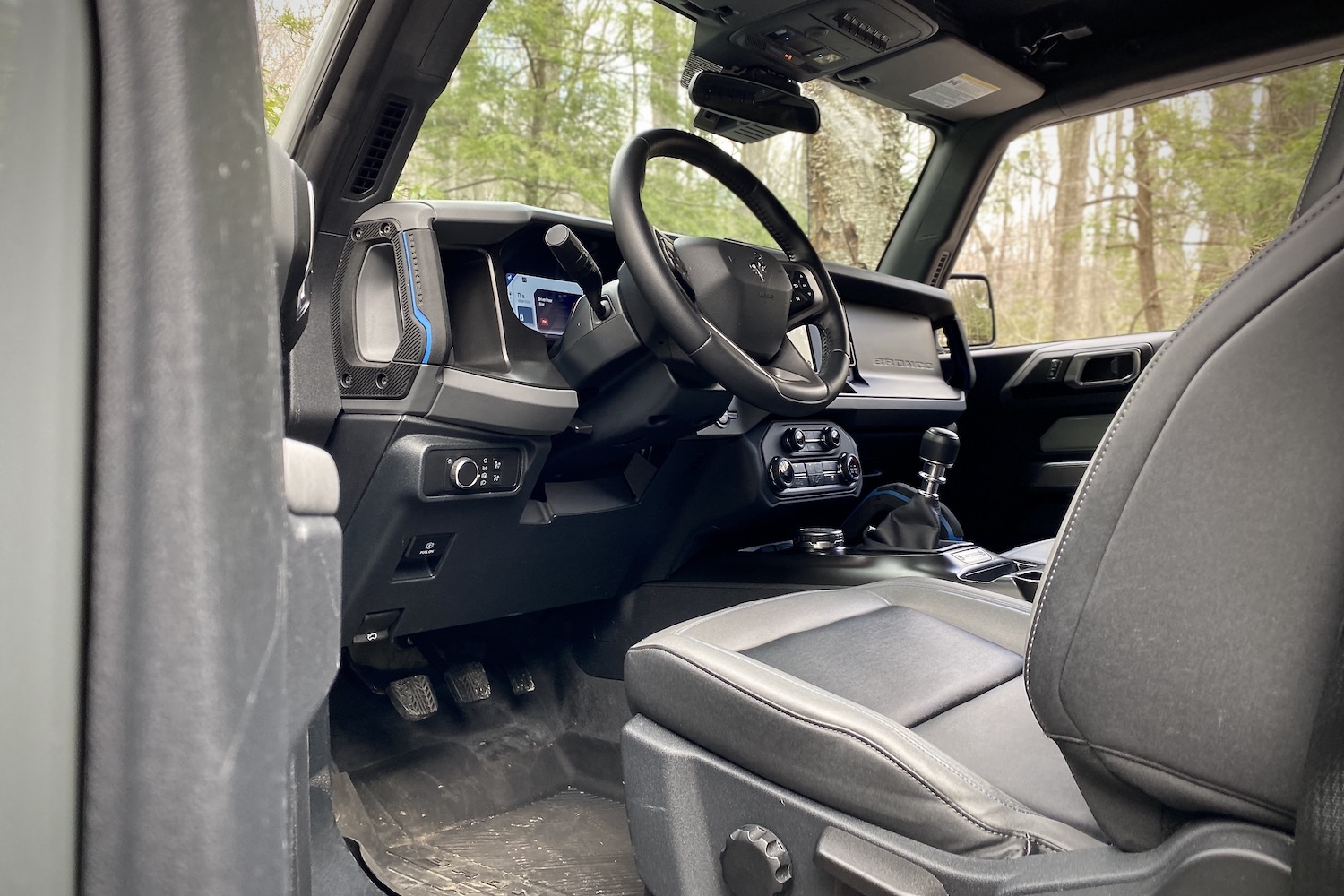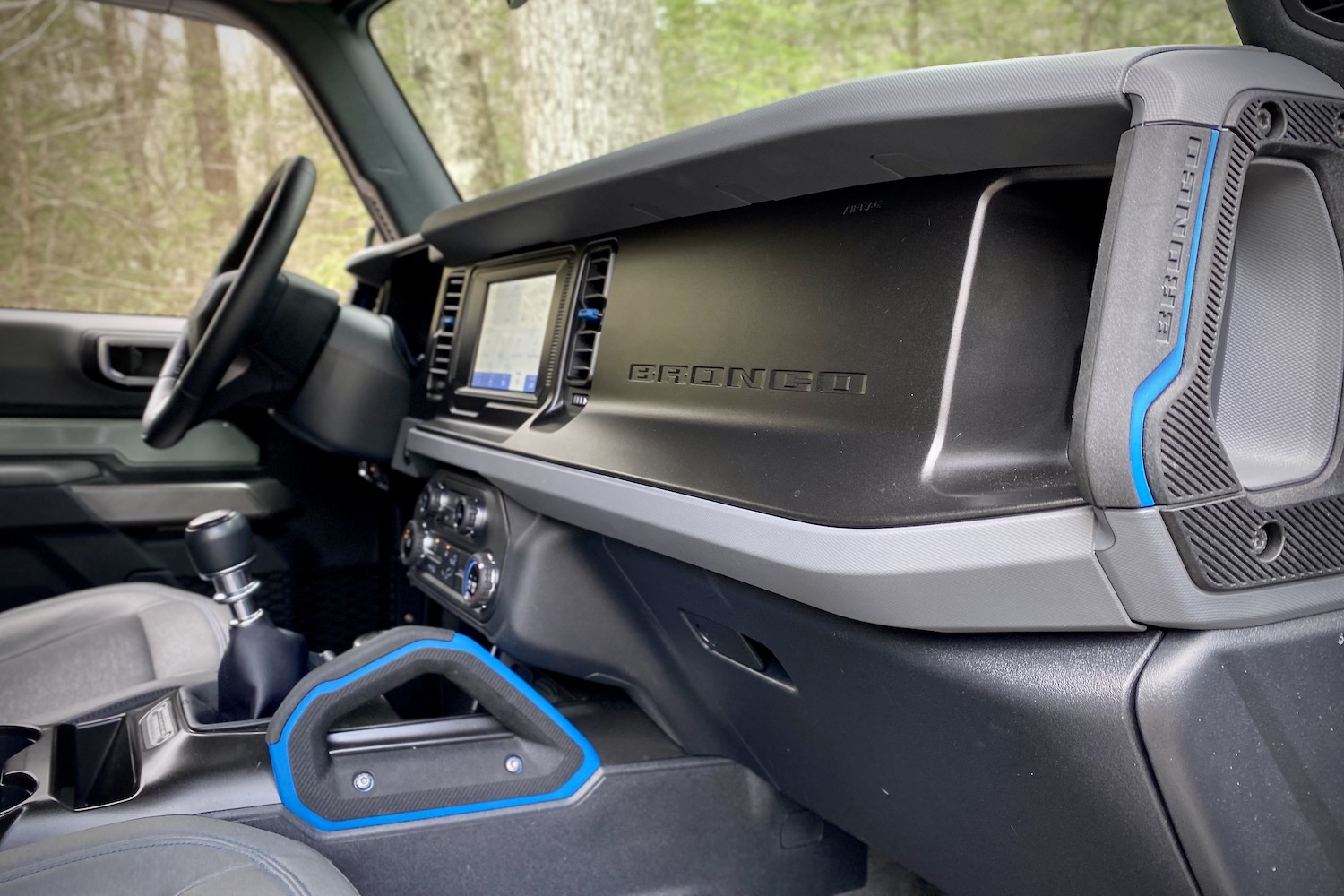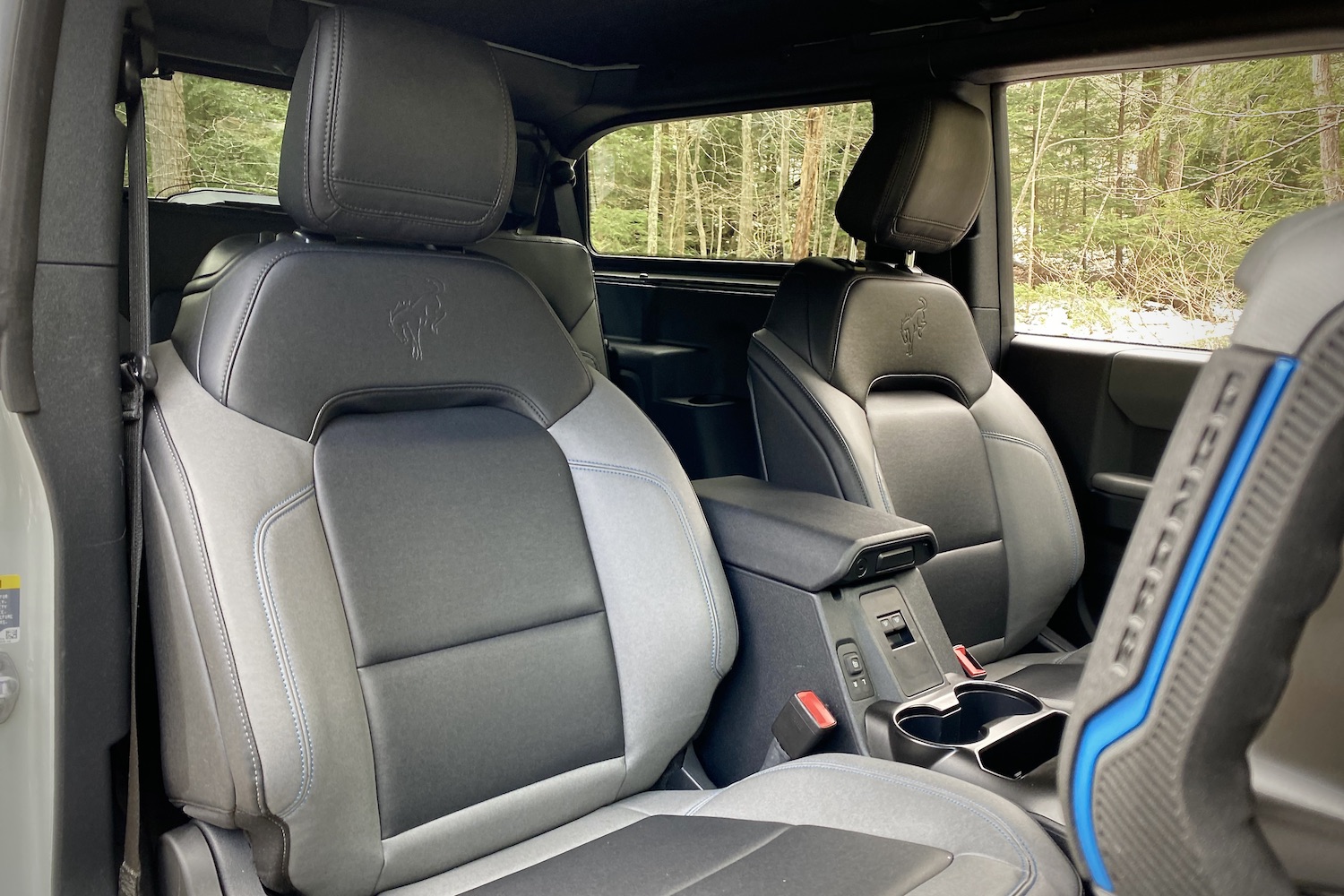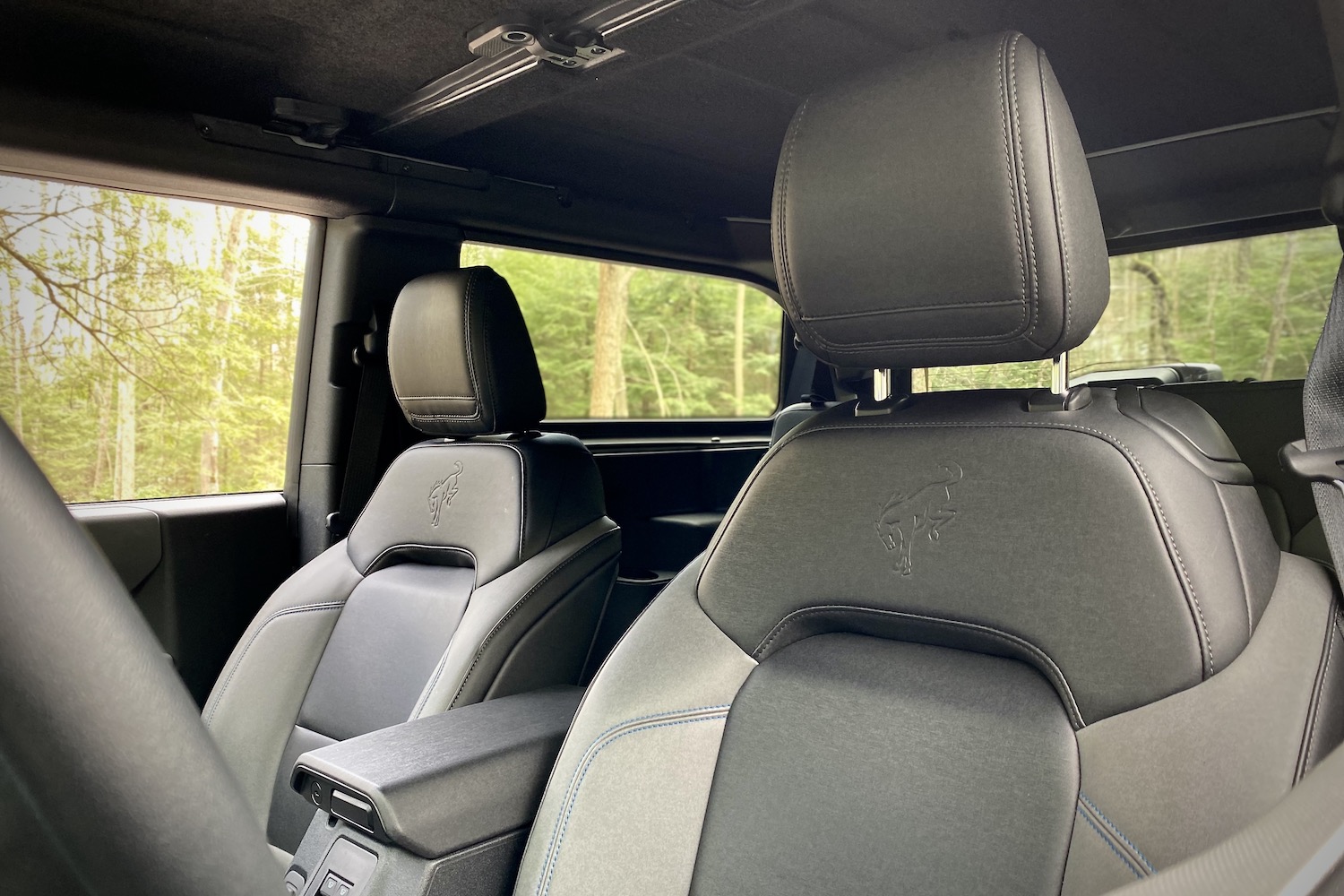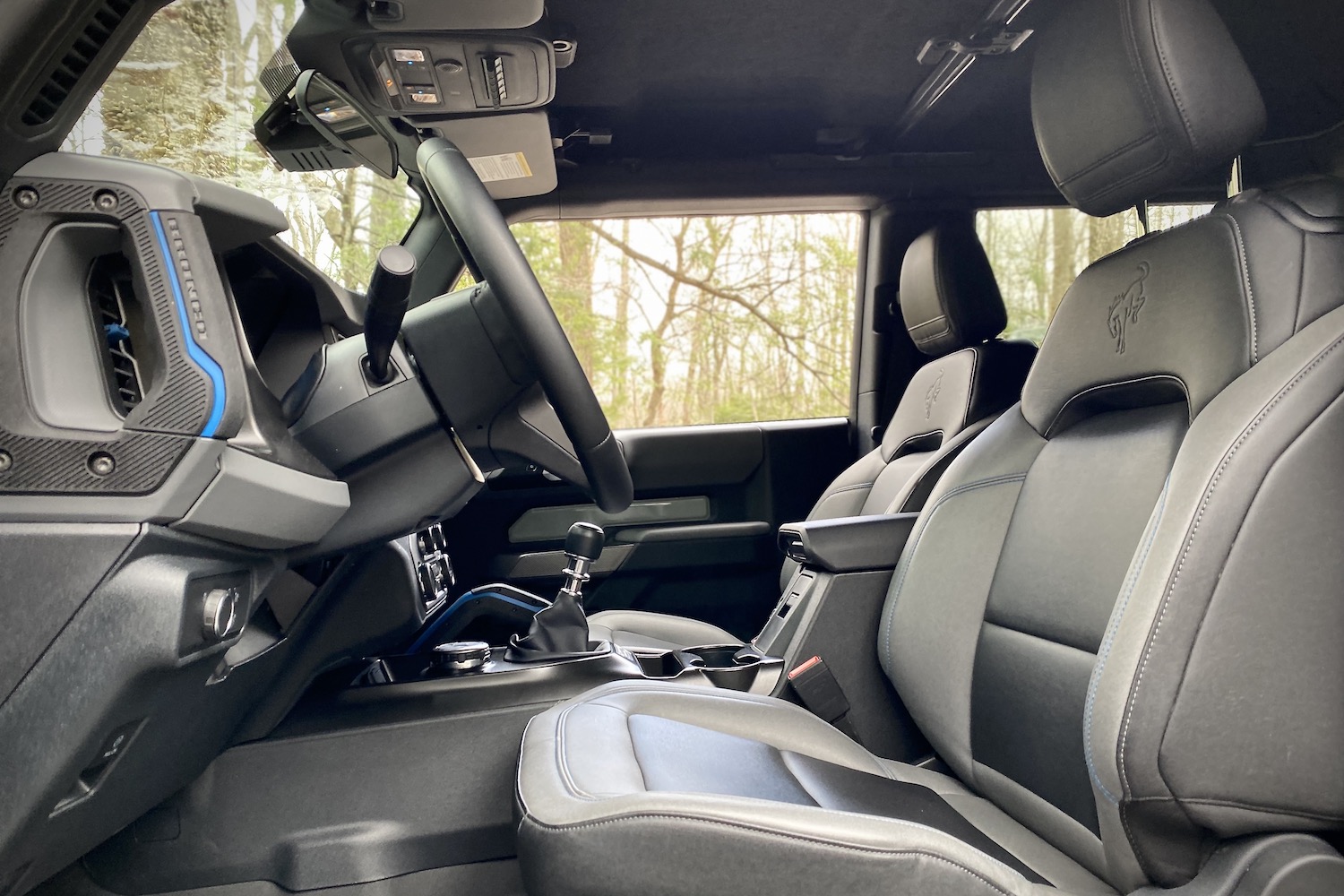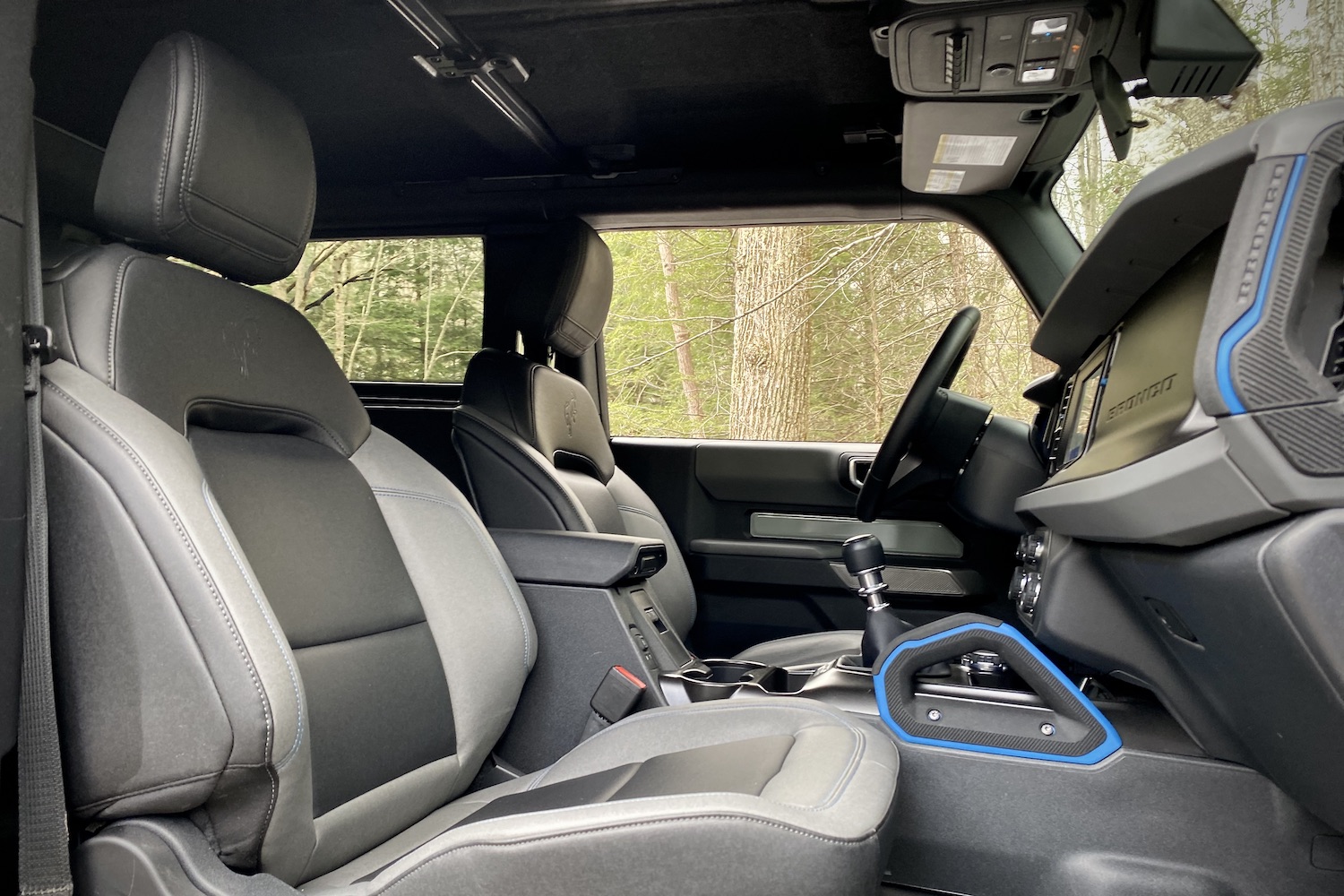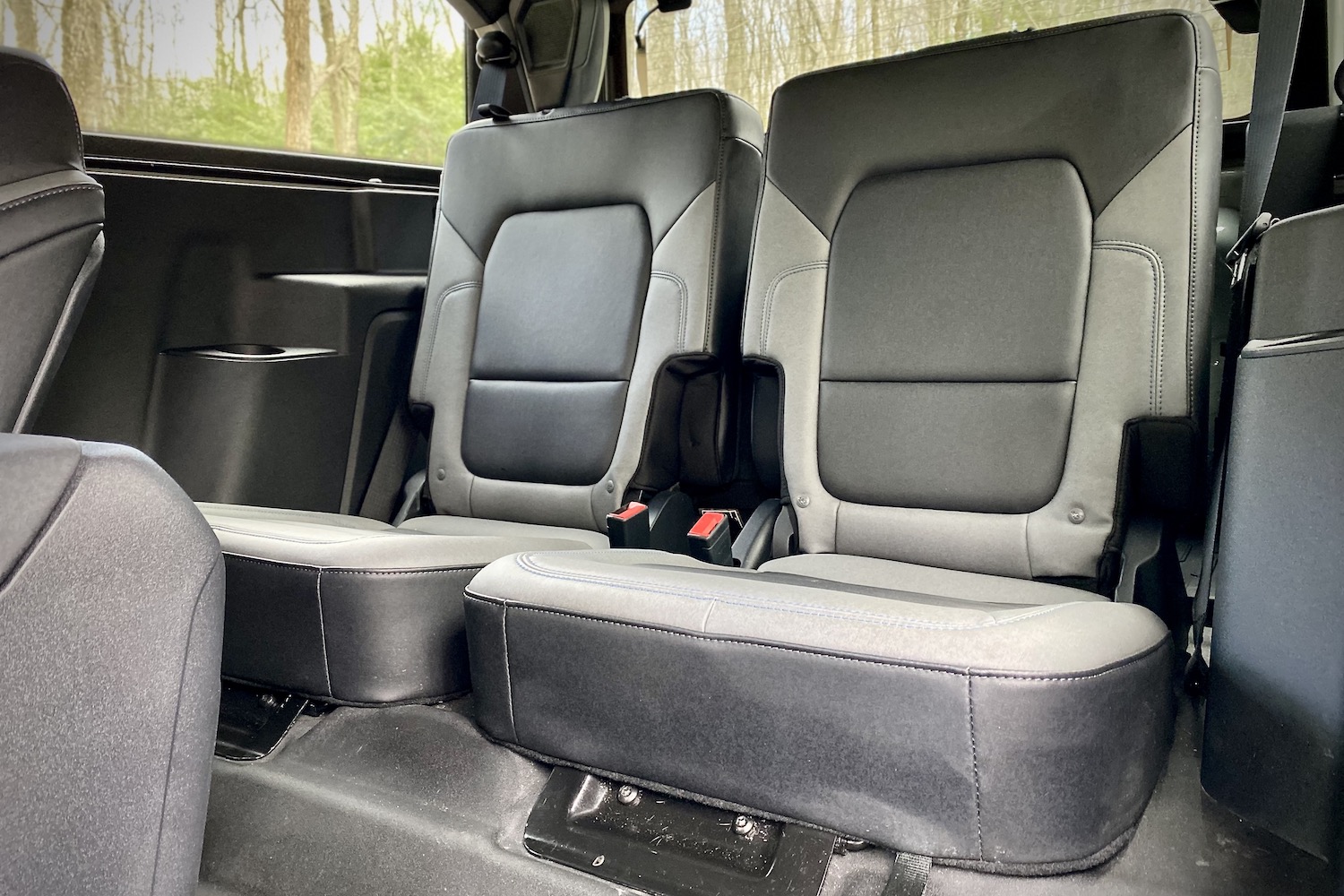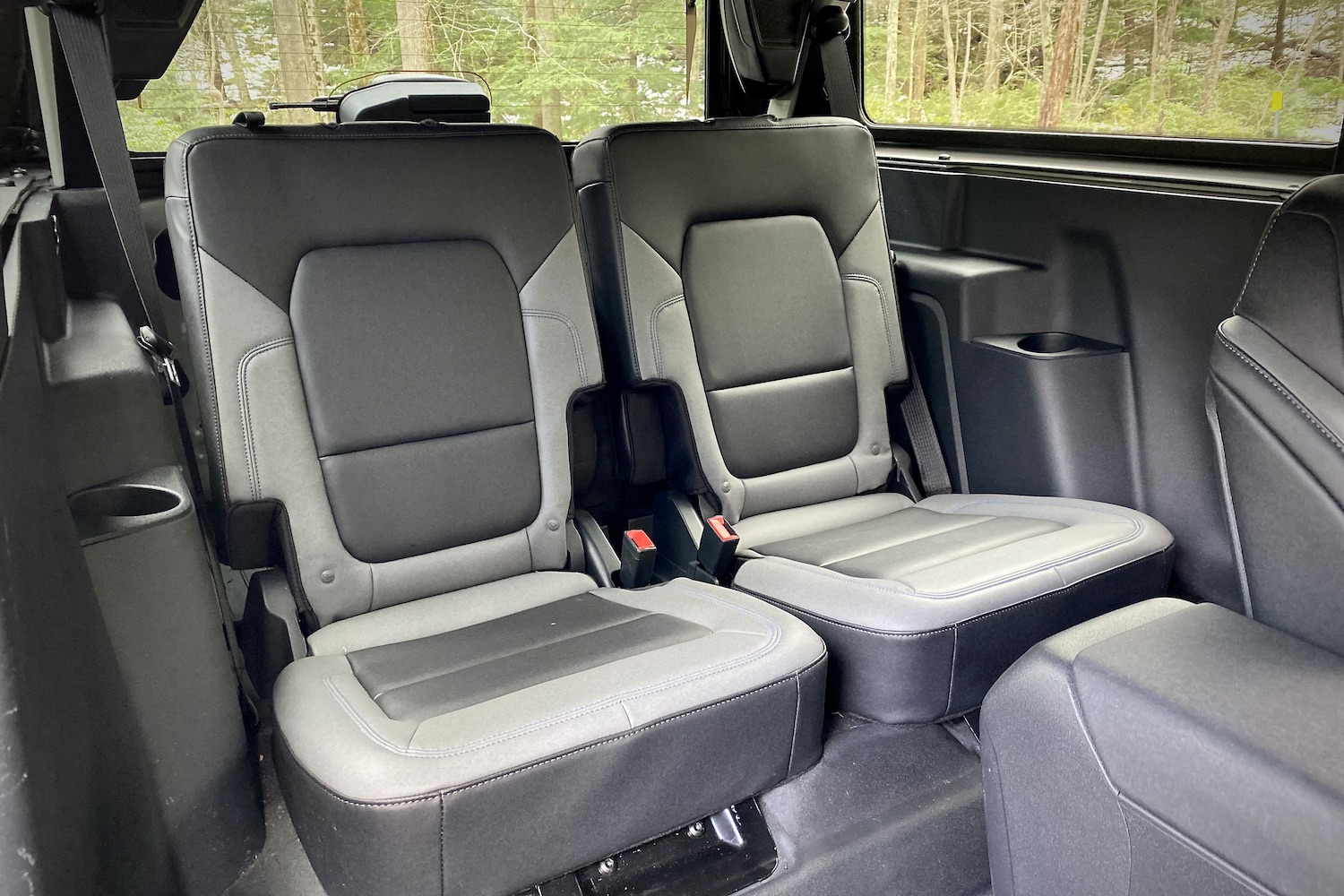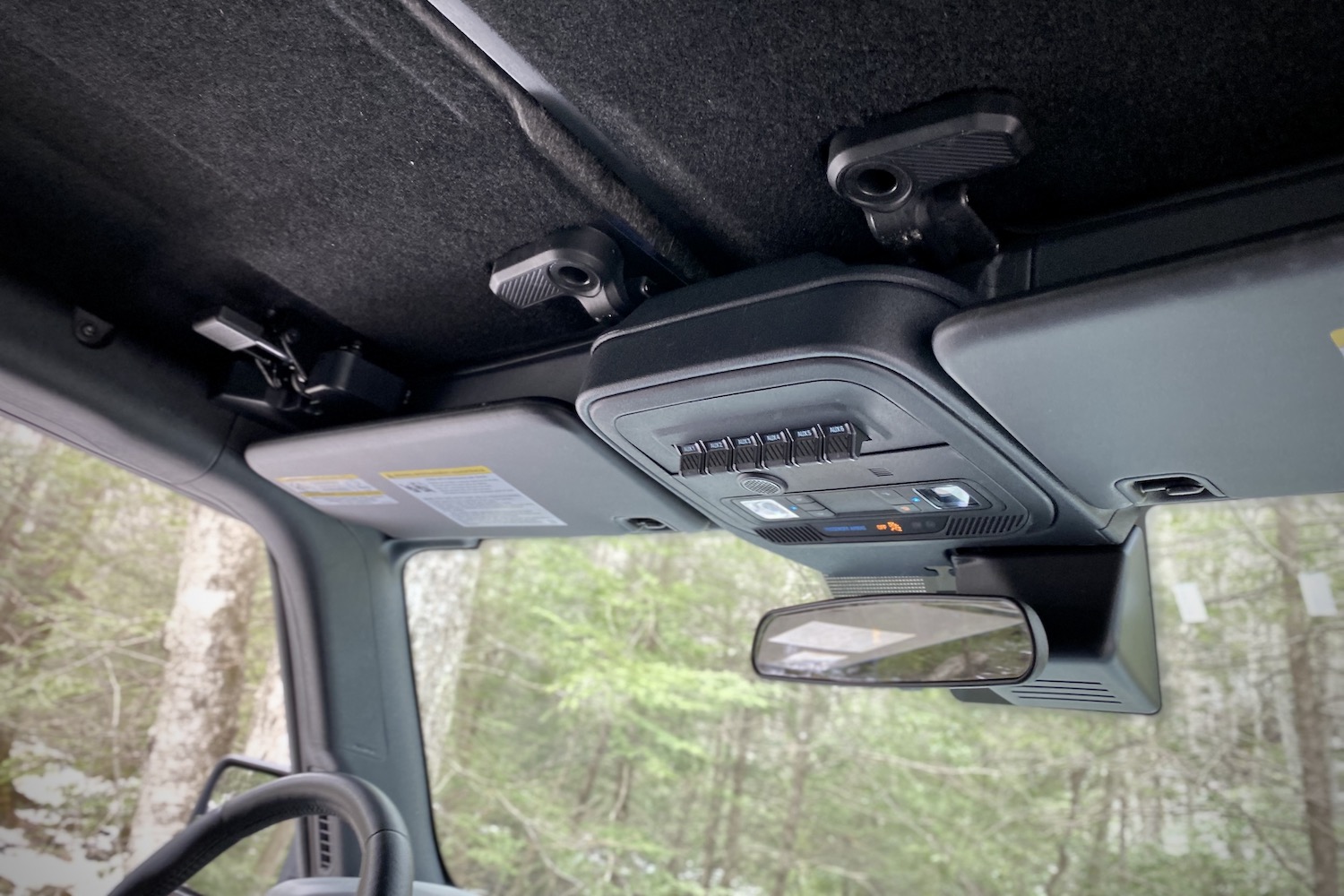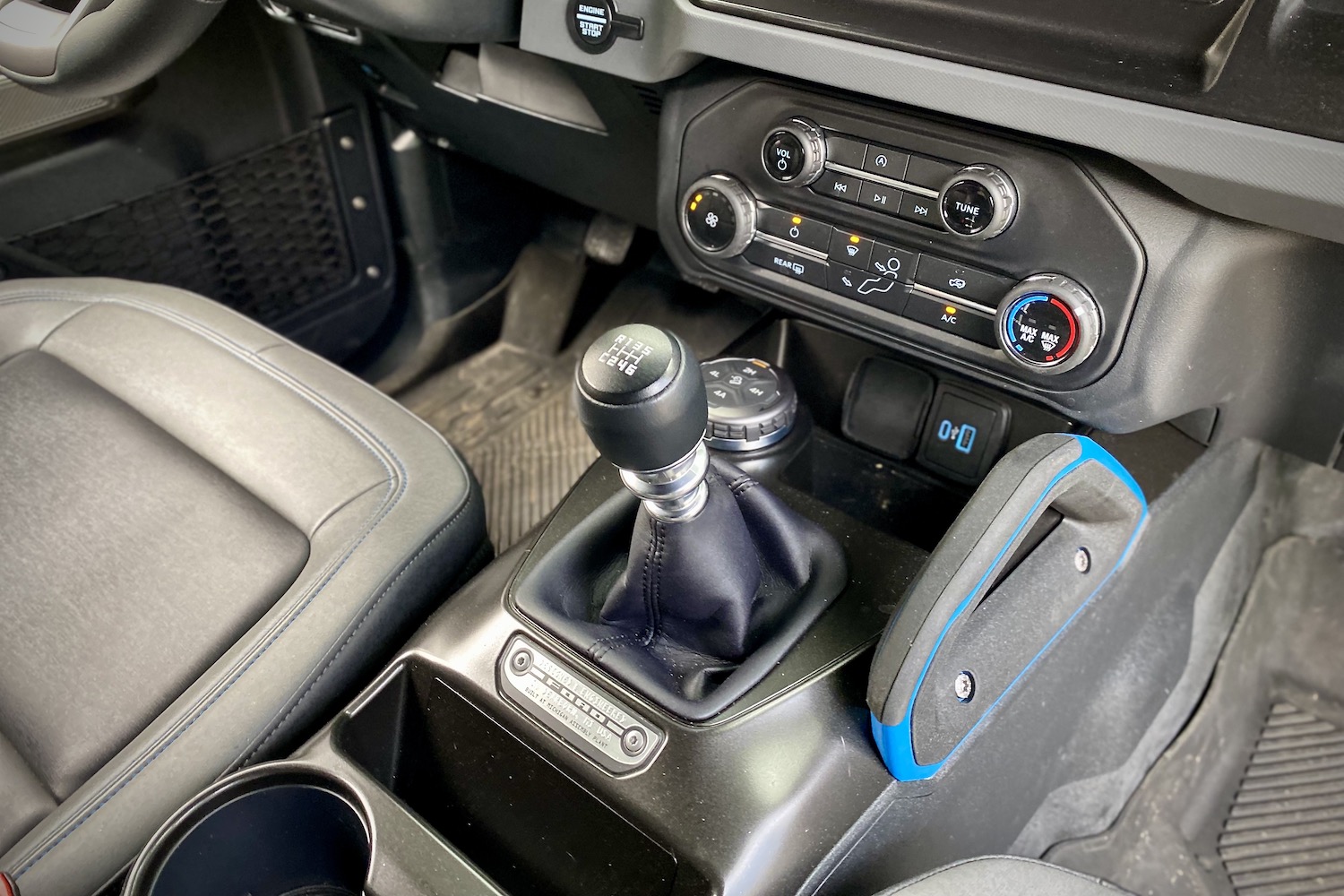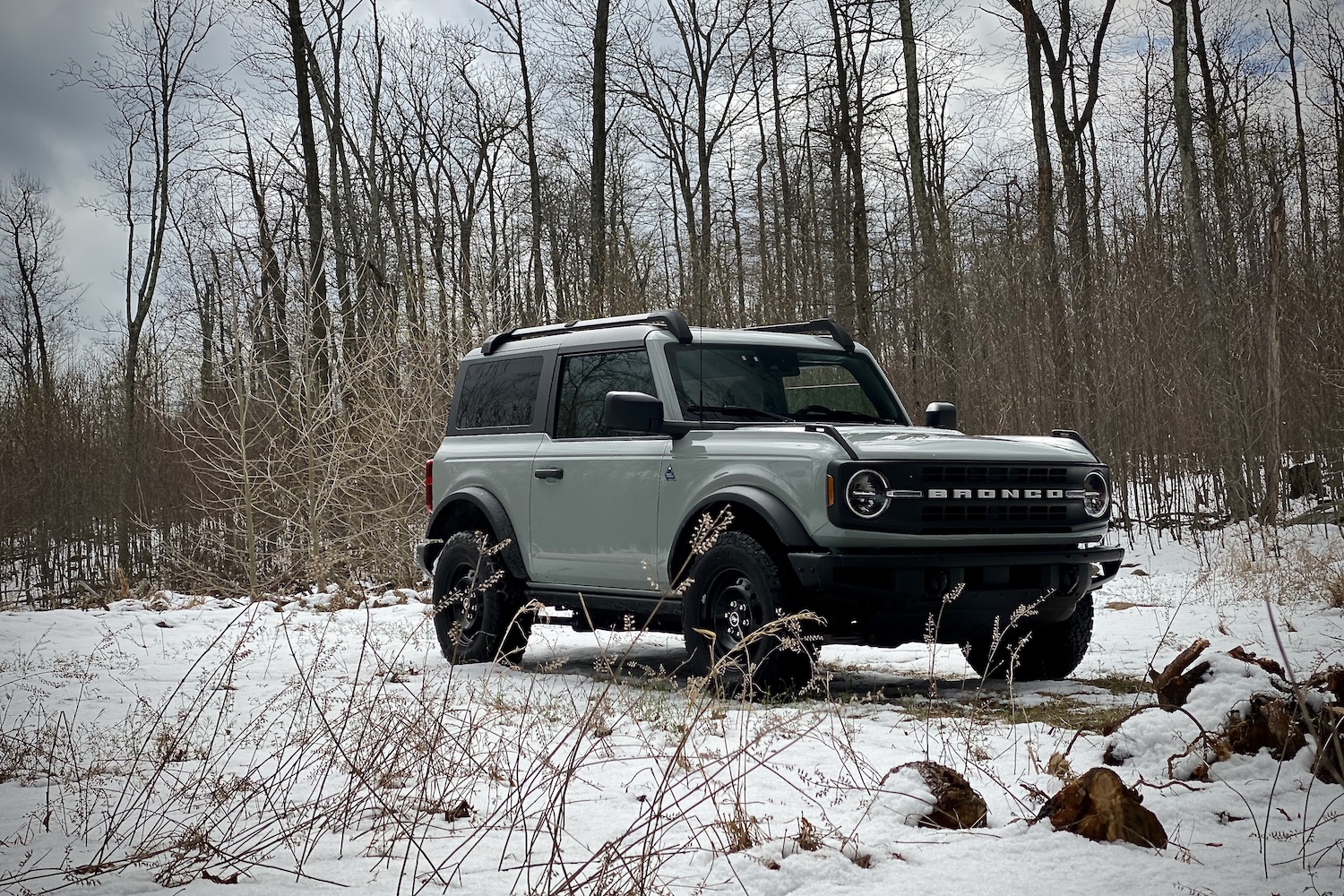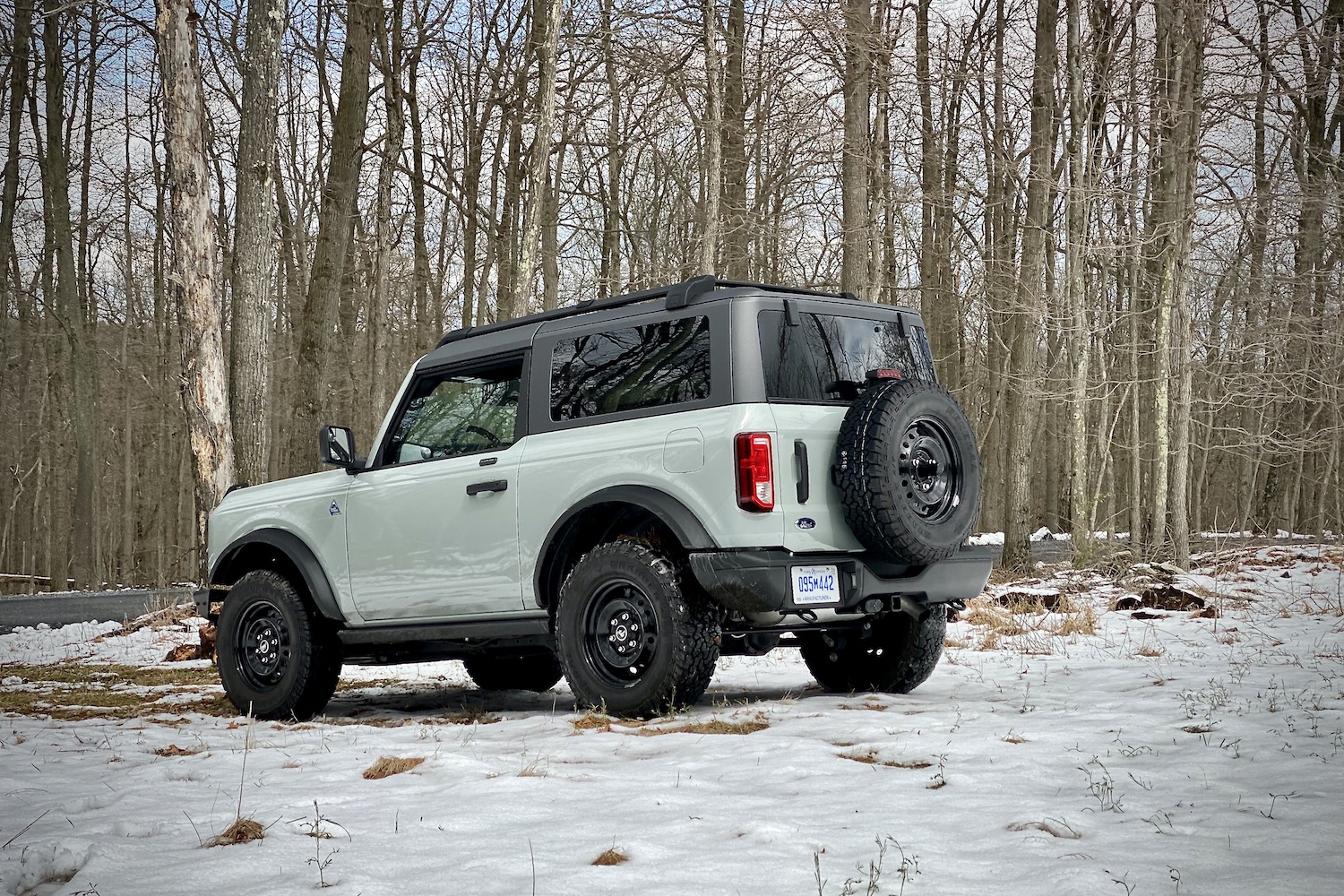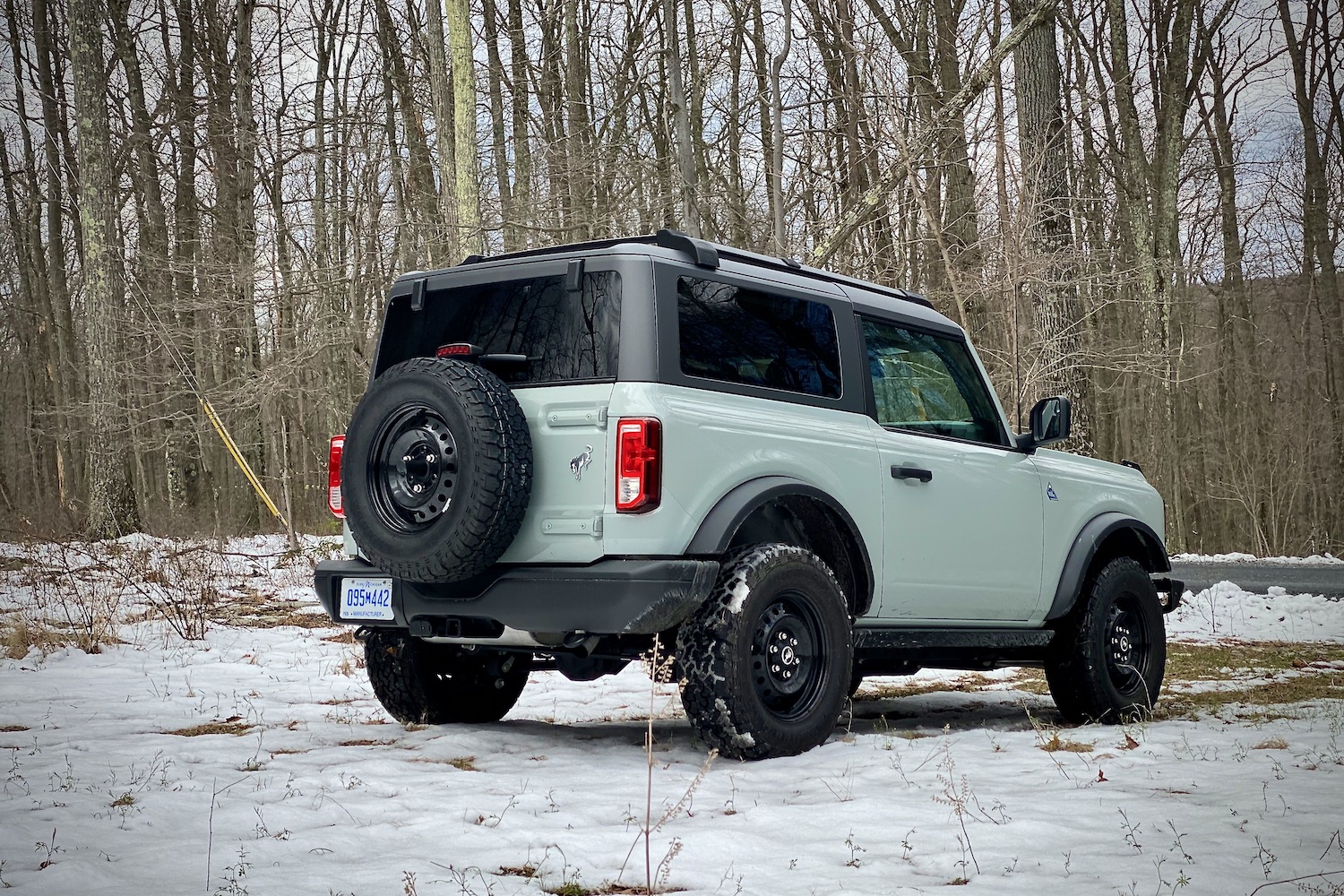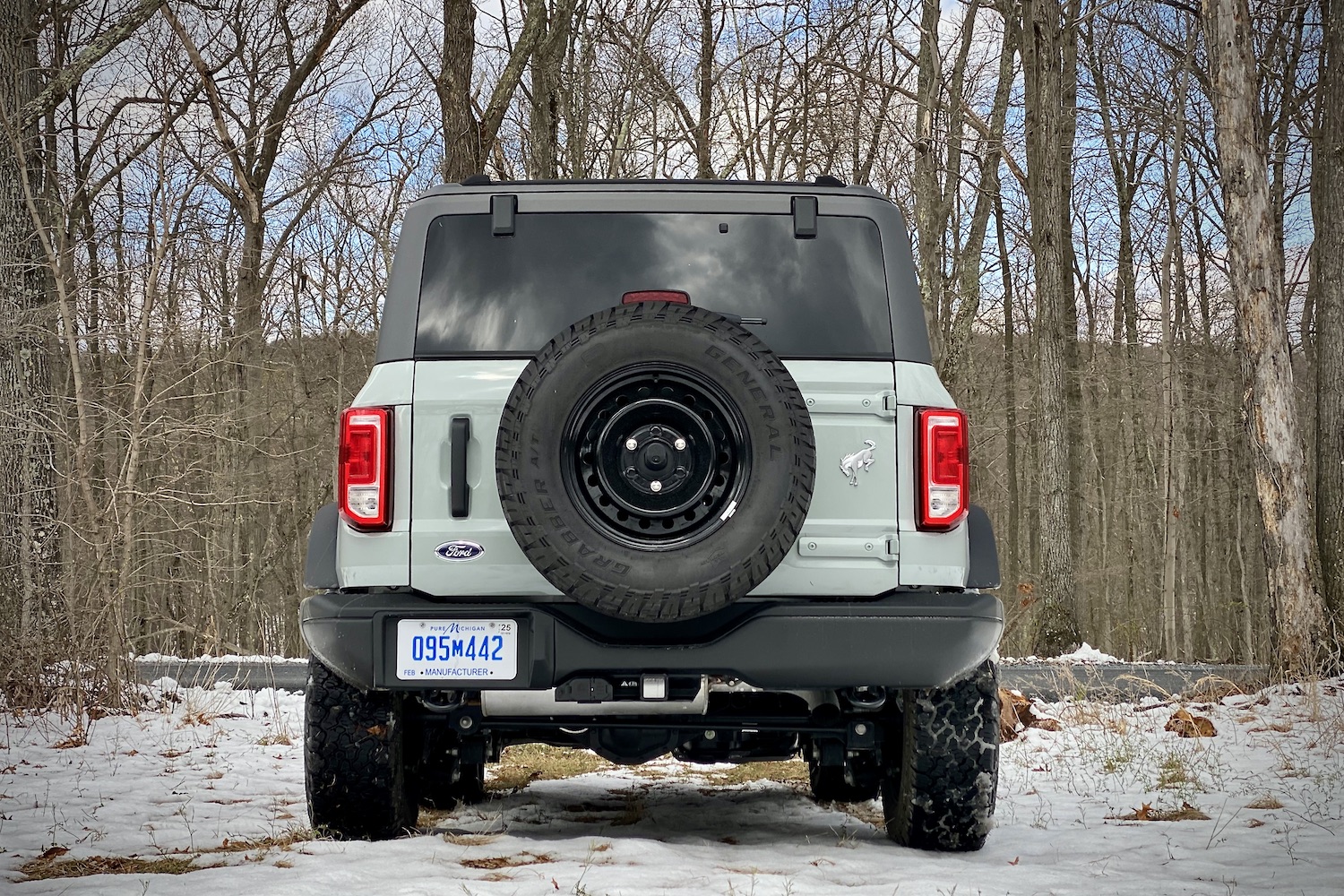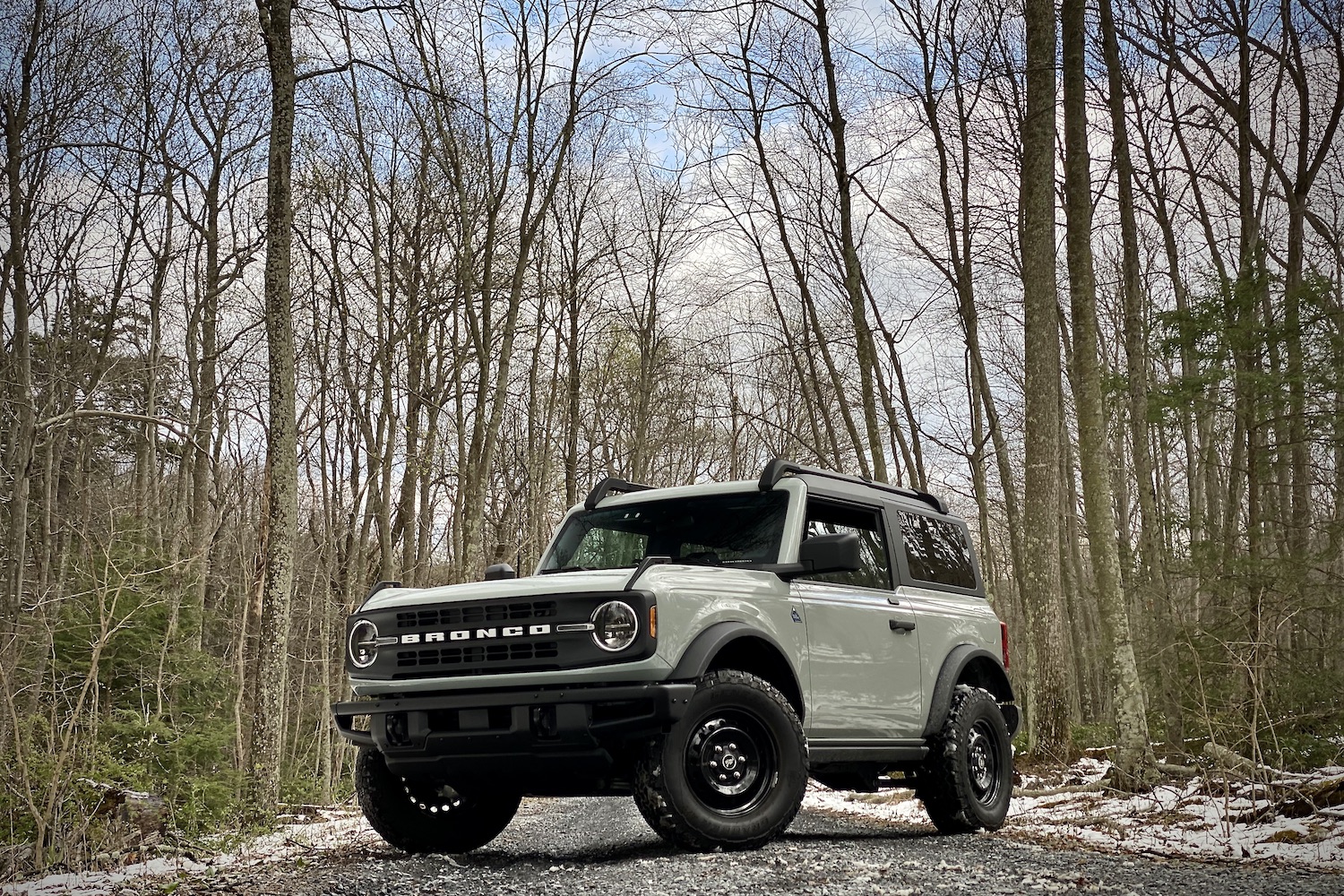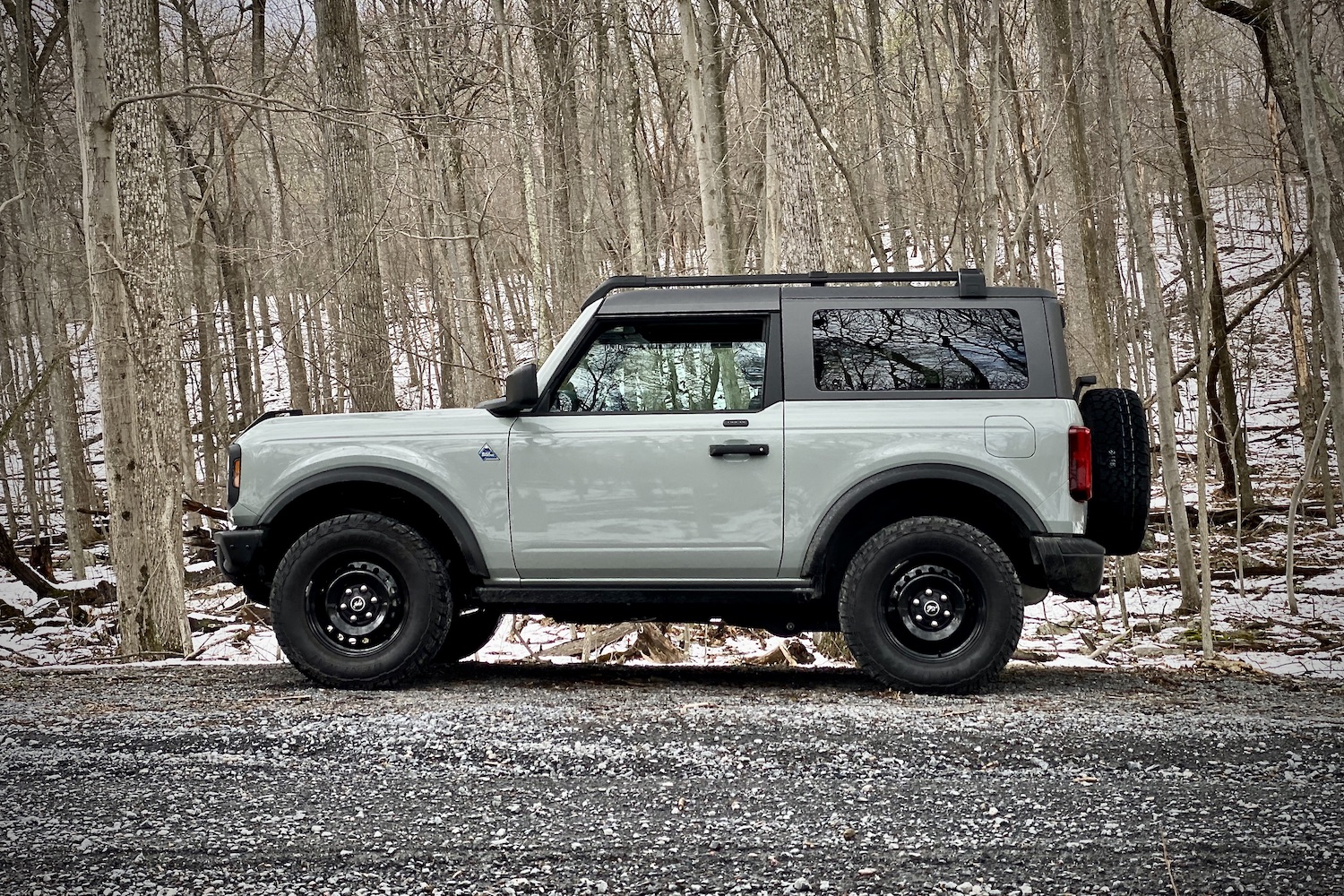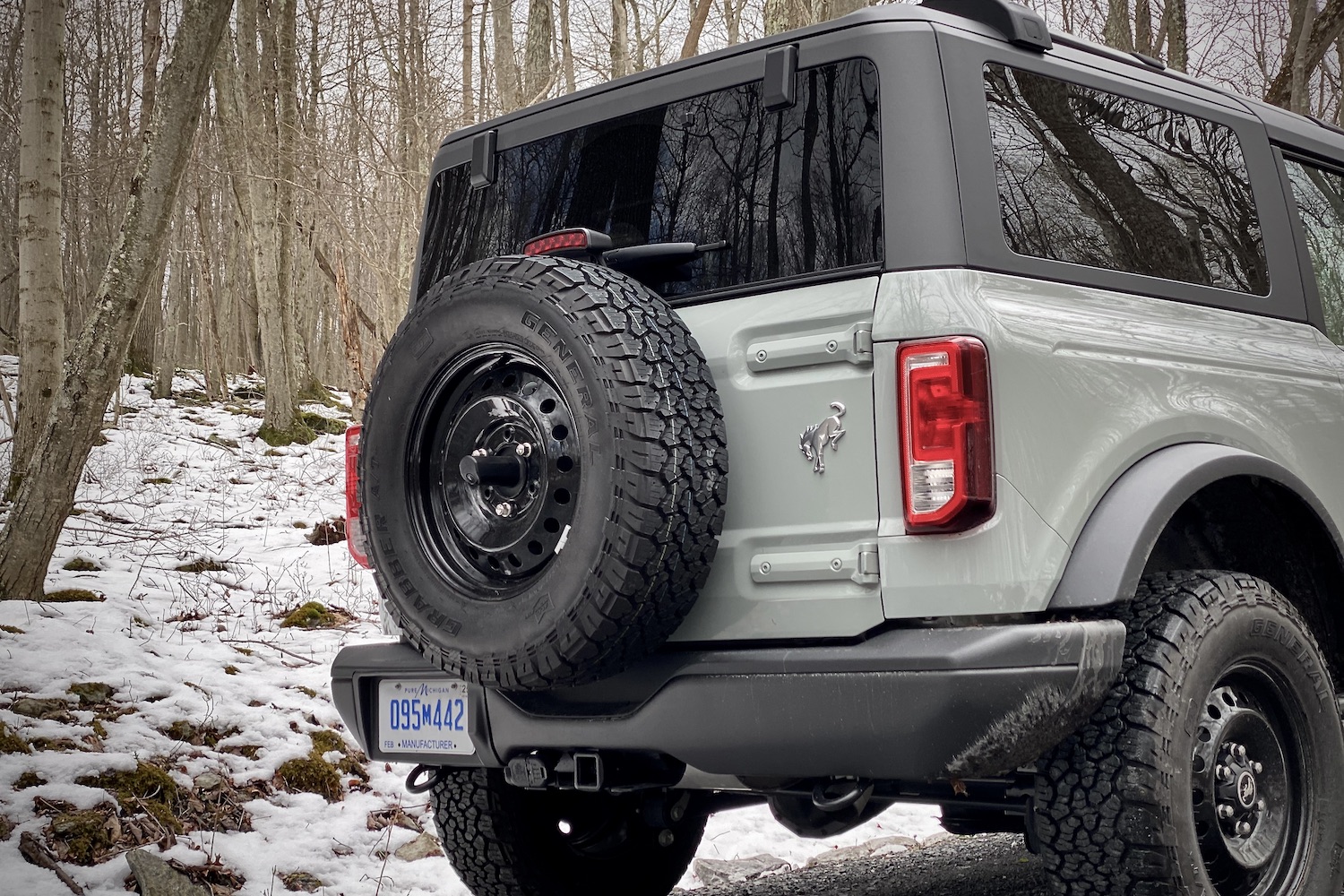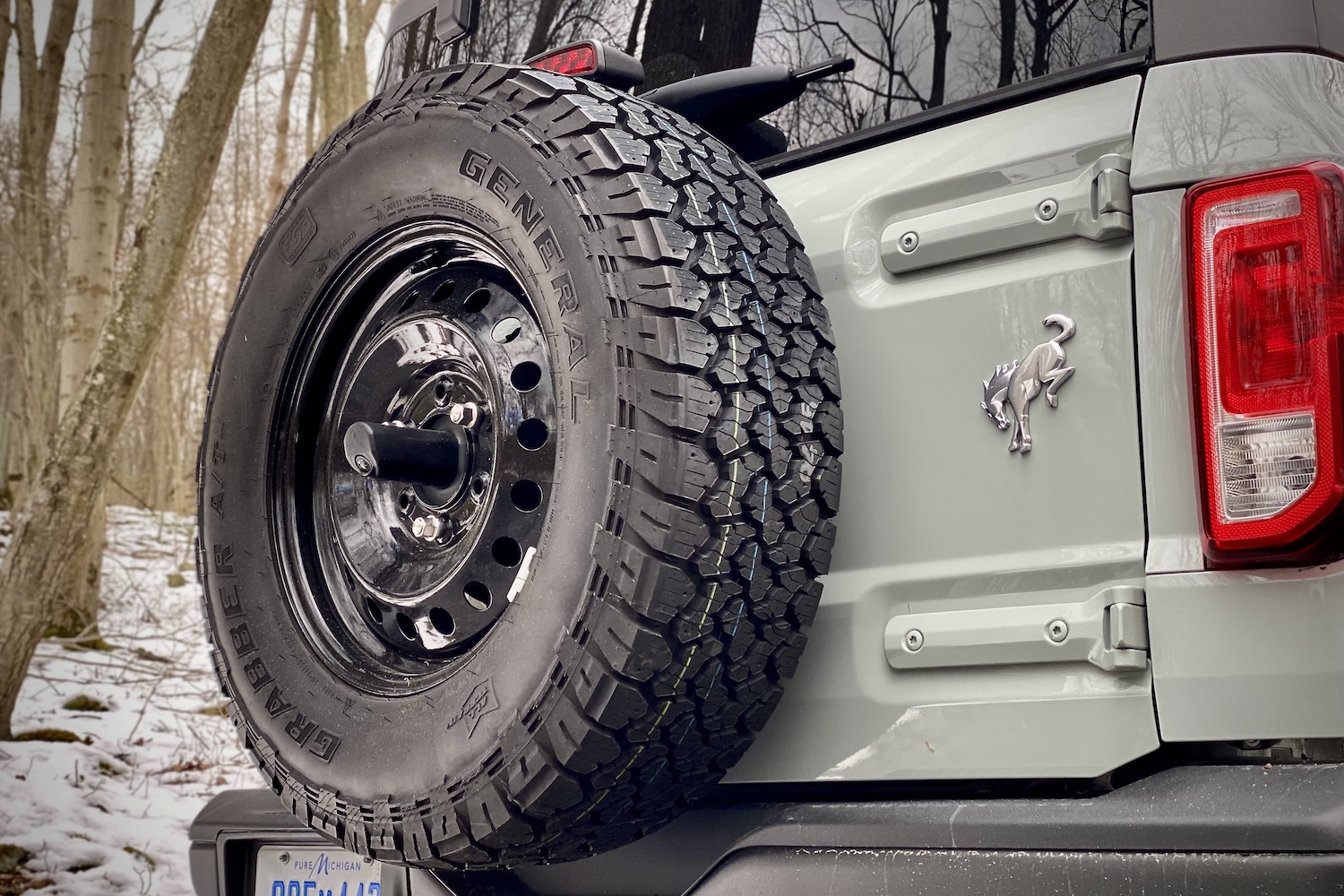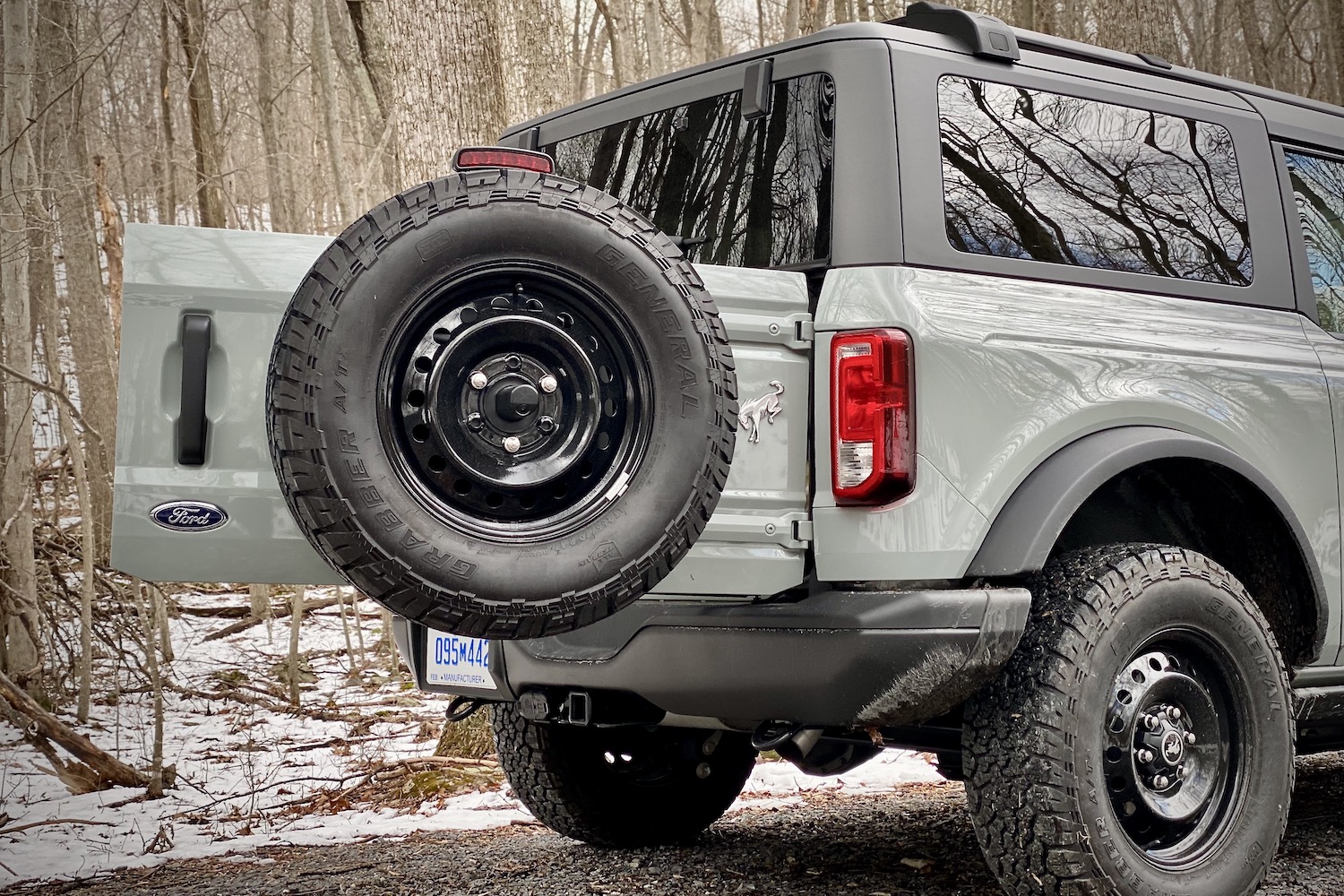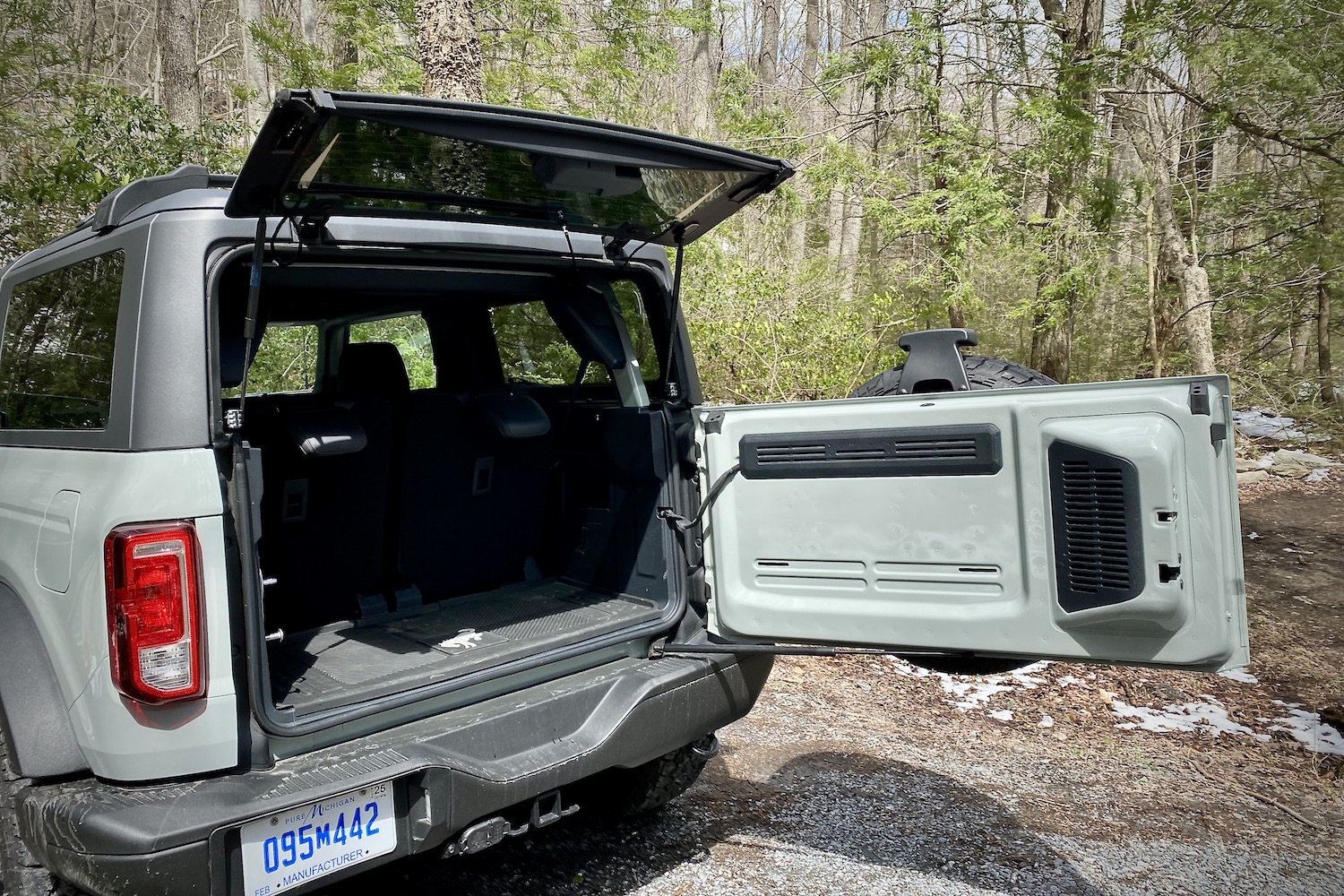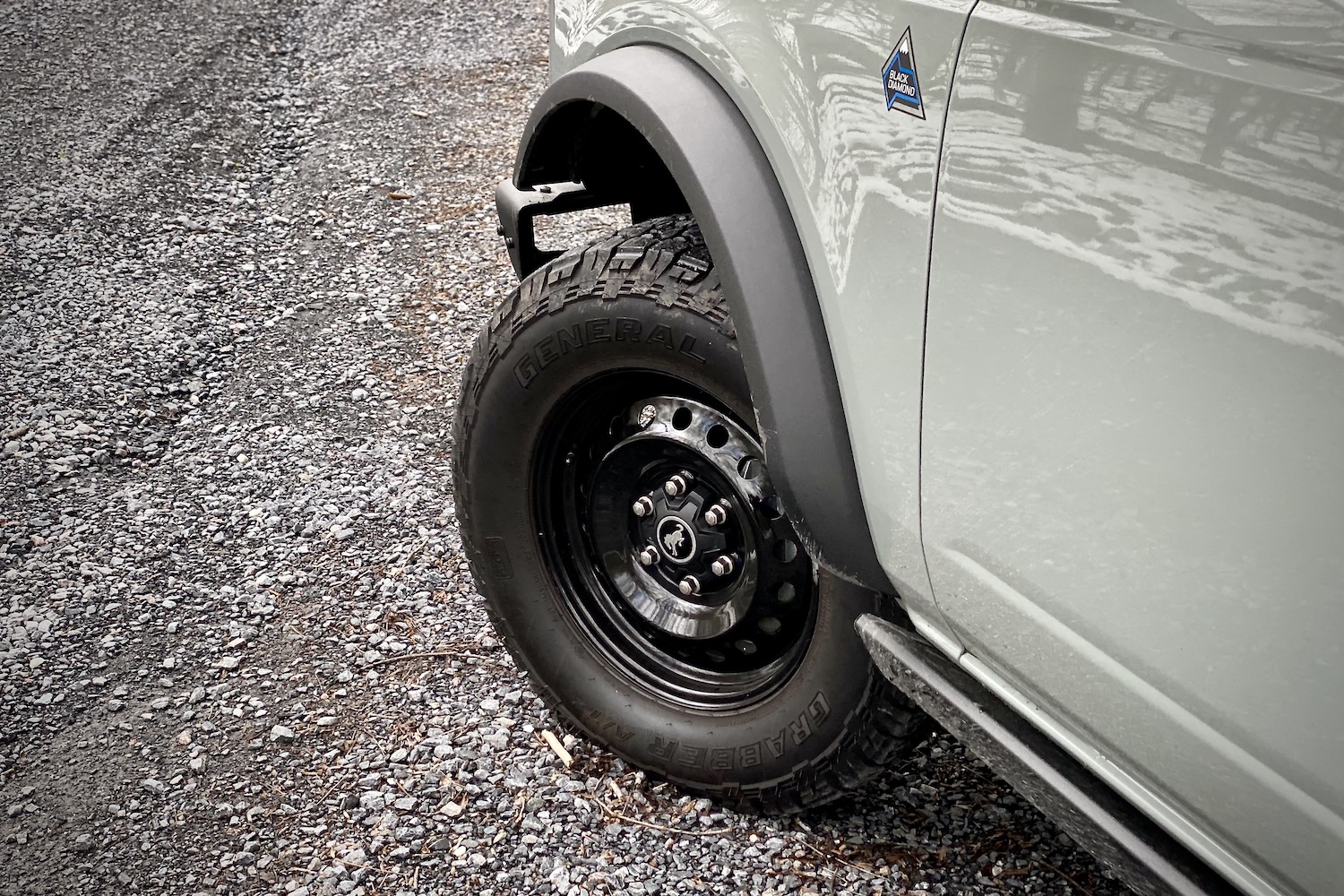We currently live in the age of the resurrection. In the past few years, automakers have resurrected old model names in modern machinery. The GMC Hummer EV, Toyota GR Supra, Chevrolet Blazer, Acura Integra, and Jeep Grand Wagoneer are some of the more prominent names that have made a return. Out of all the vehicles returning to the big leagues, the Ford Bronco has to be one that enthusiasts were looking forward to the most.
The rugged, yet family-oriented SUV was on sale in the U.S. from 1966 to 1996. Most people like to believe that the Bronco’s death was certain after O.J. Simpson went for an extended cruise through Southern California with no less than 20 police cruisers in tow. That may be true. But cannibalism also had something to do with it. Ford saw that the market didn’t exist for a large, two-door SUV and wanted to give its new Expedition space to grow.

For the Bronco’s return for the 2021 model year, Ford is offering the SUV in both two-door and four-door body styles. The appeal and versatility of the traditional four-door body style mean the two-door will be incredibly hard to find in the real world. Even more exclusive will be the seven-speed manual transmission. In that regard, we received a unicorn to test: a two-door Black Diamond with a manual transmission.
Ford had 25 long years to come out with an SUV to take on the Jeep Wrangler. What it did instead, was create an SUV that manages to be better than the Wrangler in nearly every way. If it weren’t for the semiconductor chip shortage and outright greed by dealers, you’d find Broncos in every neighborhood, at every Starbucks, and on your favorite trail. The Bronco is so good, it doesn’t just appeal to consumers that remember the old one or who are interested in off-roading. It’s a statement vehicle, an enthusiast’s car, and a decent family vehicle, all wrapped in a rugged package.
Design and Interior
If it weren’t for the massive “BRONCO” logo on the front, the Bronco and Wrangler would have incredibly similar designs. Ford clearly isn’t trying to hide the Bronco’s true intentions with the SUV’s boxy design, flared fenders, and spare tire on the back. No one is going to walk up to the Bronco and expect it to be anything other than an off-roader. Even without the mega-sized Sasquatch package, the Bronco wears its intentions on its sleeve.
Every Bronco is a convertible, though the kind of top you get depends on body style and options. The two-door comes with a standard hardtop roof that can be removed in sections. The “T-Top” panels are held in place with sturdy quarter-turn latches and weigh 12 pounds each. Once you get the hang of how to remove and install them, it only takes a few minutes to do so. Removing the back portion of the Bronco requires a Torx driver and a ratchet, both of which come with the SUV.
At 173.7 inches long, the two-door Bronco isn’t a small SUV, but it is shorter in length than Ford’s compact Escape. It’s also roughly an inch shorter in width than the Escape, too. On a trail, you’ll find that the two-door Bronco will fit on most tight paths, while the four-door might be a little too long for tighter stuff. In the real world, you won’t be grinding your teeth to get the Bronco into a tight parking spot.
Regardless of trim level, the Bronco’s interior is spartan. The whole idea with the SUV’s cabin is that you’re getting materials, like marine-grade vinyl upholstery, that are easy to clean after a day of off-roading. Even the rubberized floors have a drain plug for easy cleanup. You’re also getting nifty touches like frameless doors that are easy to remove and a built-in rack on the dashboard to mount your phone to record excursions. When you think about the Bronco’s intended purpose and reason for existence, the hard plastics don’t feel or look all that bad. Of course, you can spec your Bronco with leather and heated seats, but those options are limited to higher trims and pricey optional packages.
Surprisingly, even the two-door Bronco offers a roomy cabin in both rows of seating, though seating capacity tops out at four compared to five in the four-door model. Getting in and out of the rear seats can be a pain – quite literally if you bonk your head – because of the Bronco’s hefty roof pillar. But once nestled in, passengers get 35.7 inches of legroom and the same comfortable seats as passengers in the front.
From the special Bronco images that appear on the infotainment screen and digital instrument cluster to the rubberized controls, the SUV’s interior feels well thought out. Of course, nothing’s perfect and even chocolate ice cream has its own flaws. The way the digital instrument cluster is configured will infuriate you for the first few days, but you’ll get used to it.
The window controls require drivers to have flexible wrists to reach, as they’re placed on the center console lid. Whether it’s design or a lack of sound-deadening materials, the Bronco’s cabin sounds even louder than the Wrangler’s on the highway. Lastly, cargo capacity in the two-door model isn’t great, as the SUV offers 22.4 cubic feet of cargo space with the rear seats in place.
Driving Experience
The way the Bronco handles is what really makes it feel like it’s well ahead of the Wrangler. The independent front suspension helps the SUV handle potholes and bumps on the road without sending a nervous shimmy throughout the entire chassis. It also helps the Bronco track straight on the highway without continuous inputs. Then, when you find yourself on a road with corners, because those exist, you’re not gripping the steering wheel in sheer terror over the possibility a rollover.
There’s no way of hiding the Bronco’s body-on-frame platform, as the SUV rides fairly harshly, rolls around corners, and dives under hard braking, but the SUV is plenty comfortable enough for daily use and composed around corners. Despite its enjoyable on-road characteristics, it’s hard to ignore that the SUV feels like it wants to go off-roading.
The Black Diamond trim we tested was equipped with the Advanced four-wheel-drive system that lets the computer figure out where to send the power and to what degree based on the road conditions. On the back trail that we encountered with deep ruts, snow (despite it being toward the end of April), and loose gravel, we left it in 4A and found the system managed to do its own things well. For casual off-roaders, all you’ll have to do before hitting a trail is engage 4A and then choose the appropriate G.O.A.T. model. That should get you through most off-roading excursions.
Unlike the Bronco of yesteryear, the new one isn’t available with a V8 engine. Instead, you get a choice of a turbocharged four-cylinder engine or a twin-turbo V6. The Raptor gets its own unique turbocharged six-cylinder engine. The Bronco we tested came equipped with the base turbocharged 2.3-liter four-cylinder engine that’s rated at 300 horsepower and the seven-speed manual transmission. The base engine is the only one in the Bronco lineup that’s available with the manual gearbox, as the V6 engines are paired exclusively to a 10-speed automatic.
There’s really nothing bad to say about the base powertrain. We would gladly take the 30-horsepower drop in power compared to the turbo V6 engine to be able to row through the manual gearbox, which has relatively short throws for an SUV, a well-defined gate, and an easy-to-modulate clutch. It’s common to catch the four-cylinder engine napping when you want to overtake on the highway, but a simple downshift rectifies that issue. This isn’t really a problem when off-roading, as first and second have short gearing that gets the turbocharger to wake up earlier.
We weren’t able to really test the Bronco’s off-roading capability during our time with the vehicle, but it clearly has chops that match the Wrangler. Where Ford’s SUV really shines is doing the on-road, boring stuff. For a highly capable off-roader, it’s decently comfortable, handles fairly well, and has an engaging powertrain. Pair all of this goodness with the Bronco’s off-roading features and engineering and it quickly becomes apparent that Ford has done a lot right.
The only flaw that I was able to find with the powertrain is poor fuel economy. Even with the base engine, the best you’re looking at getting is up to 21 mpg combined, according to the EPA. In our time with the SUV, we got 18 mpg combined. Get the more powerful 2.7-liter V6, and fuel economy drops to 19 mpg combined. Broncos with the Sasquatch package get even worse fuel economy at 18 mpg combined.
Should You Get One?
Absolutely. Whether you plan to go off-roading regularly or aren’t even remotely interested in tackling rugged terrain, the 2021 Ford Bronco Black Diamond appeals to shoppers in both camps. It’s not even terribly expensive with a starting price tag of $32,395 (with destination).
It’s been a long wait for the Bronco and because of the current climate, it seems like consumers looking to purchase an SUV will have to continue waiting. The semiconductor shortage, supply chain issues, delays in production, and dealer greed are making it hard to find a Bronco at an affordable price. If you have the funds and patience, we recommend finding a good dealership, putting an order in, and waiting a few years for your SUV to arrive. It’s a knockout, one of the best SUVs on sale today, and worth every bit of the hype it’s receiving.
Editors' Recommendations
- Chevy Silverado, Ford F-150, Tesla Model Y: These are the most popular cars in every state
- F1 Las Vegas: The iconic MSG Sphere has a weird role to play in this weekend’s race
- Ford recalls 35,000 Mach-E Mustangs due to major issue with EV battery system
- What do Toyota, Porsche, and Ford have in common? The most loyal customers, according to J.D. Power
- This is every automaker that will adopt Tesla’s Supercharger network for EVs

